Focus on Solar imaging!
Apollo series is the world’s first camera line designed specifically for solar photography, named after Apollo.
The Apollo series features Sony sensors with global shutters and a focus on monochrome sensors.
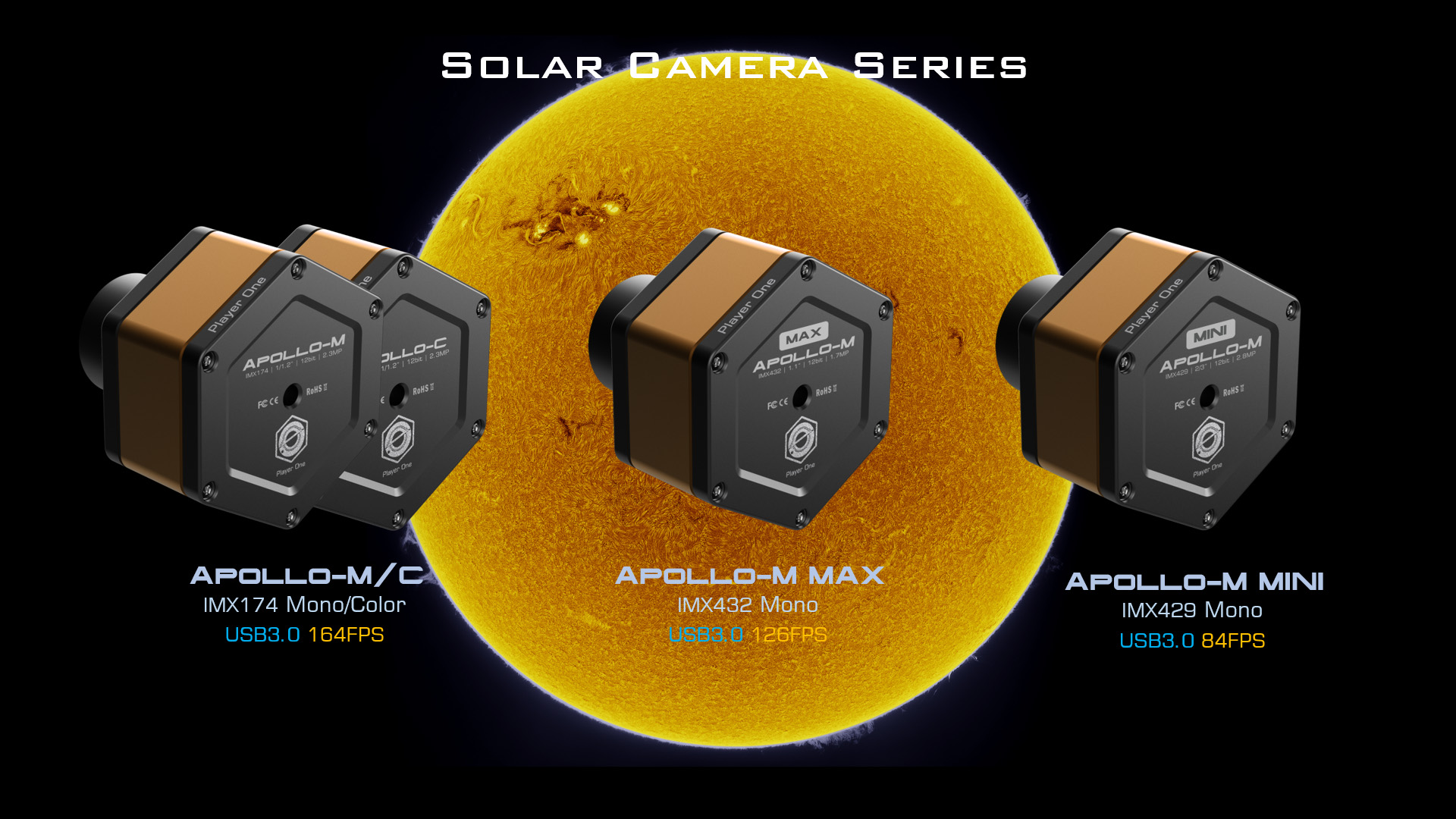
Now, we lanuch 4 models of Apollo cameras:
Apollo-M MAX (IMX432), 1.1 inch sensor, monochrome.
Apollo-M MINI (IMX429), 2/3 inch sensor, monochrome.
Apollo-M (IMX174) , 1/1.2 inch sensor, monochrome.
Apollo-C (IMX174) , 1/1.2 inch sensor, color.
* Notice: Solar camera requires energy rejection and light reducer, such like Baader film or Herschel wedge. Please DO NOT use it directly imaging the Sun.
Product Description
Apollo-M MAX is a solar camera developed by Player One Astronomy, which adopts the Sony IMX432 1.1” format monochrome sensor. The 9um pixel size accommodates a well depth of 100ke with a total of 1.7MP (the resolution is 1608*1104), and the diagonal is 17.5mm.
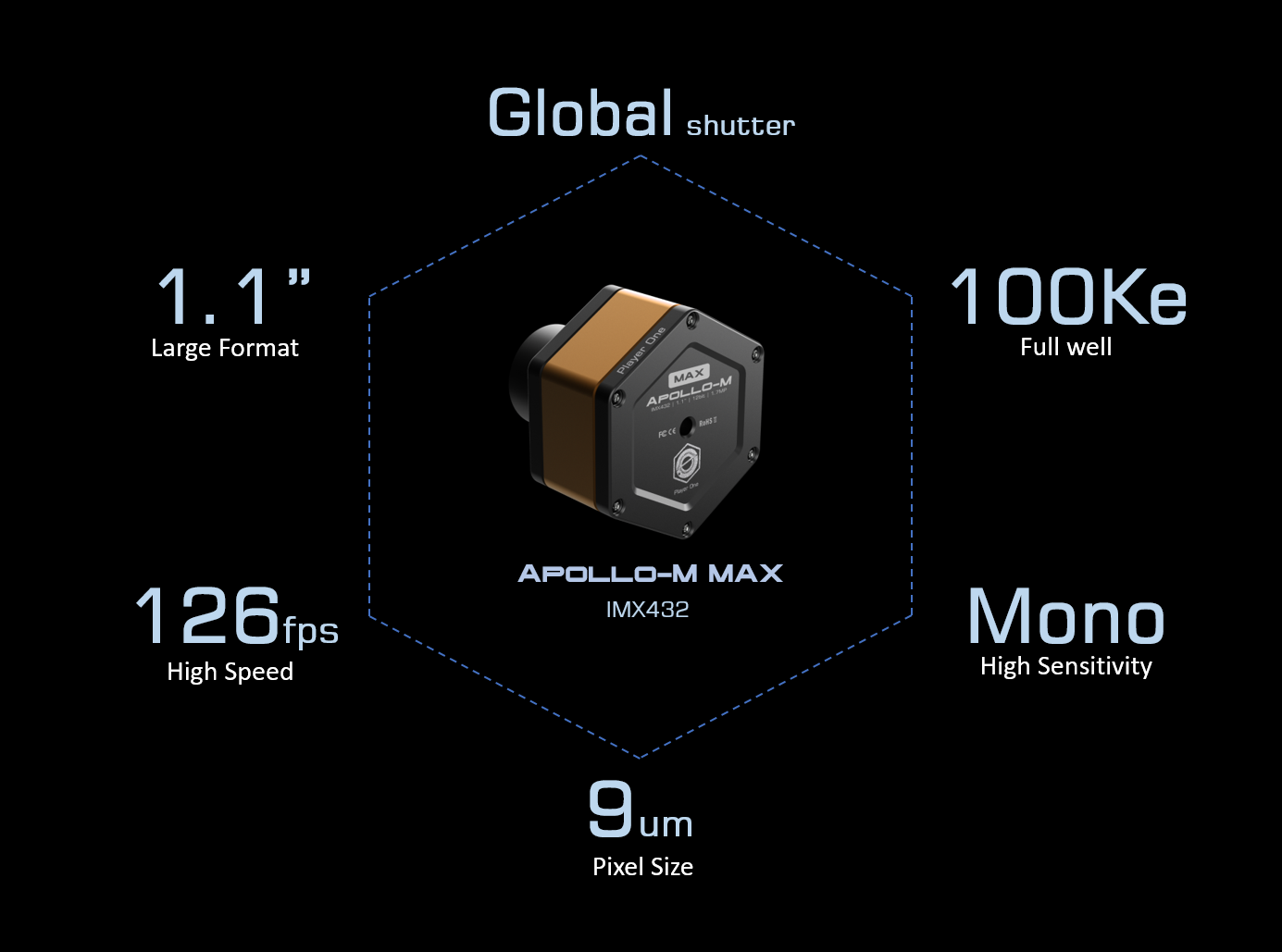
Pregius Technology
Apollo-M MAX (IMX432) is based on Pregius 3rd Generation. But IMX432 is quite different. According to the introduction of technical documents, pixel size of 3rd Gen usually is 4.5um, and full well is 25Ke. But this sensor has 9um pixel, and of course the full well up to 4x (100Ke).

Format
Apollo-M MAX (IMX432) has 1.1″ format, it is pretty big, almost twice of IMX174 chip.
Pixel size
9um pixel size is 1.5 times bigger than IMX174 camera, which means it can works at longer focal ratio, such as SCT + Daystar filter(with 4.2X) .
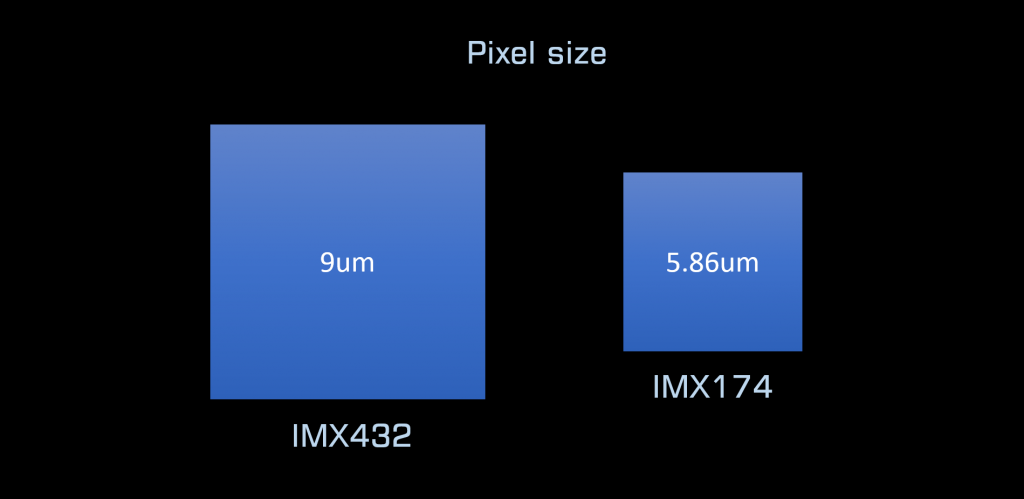
Full Well
100Ke full well, is 3 times bigger than IMX174. This feature will bring some new possibility in imaging. What we can imagine is HDR the Sun and prominence, or maybe the bright and dark side of the Moon.
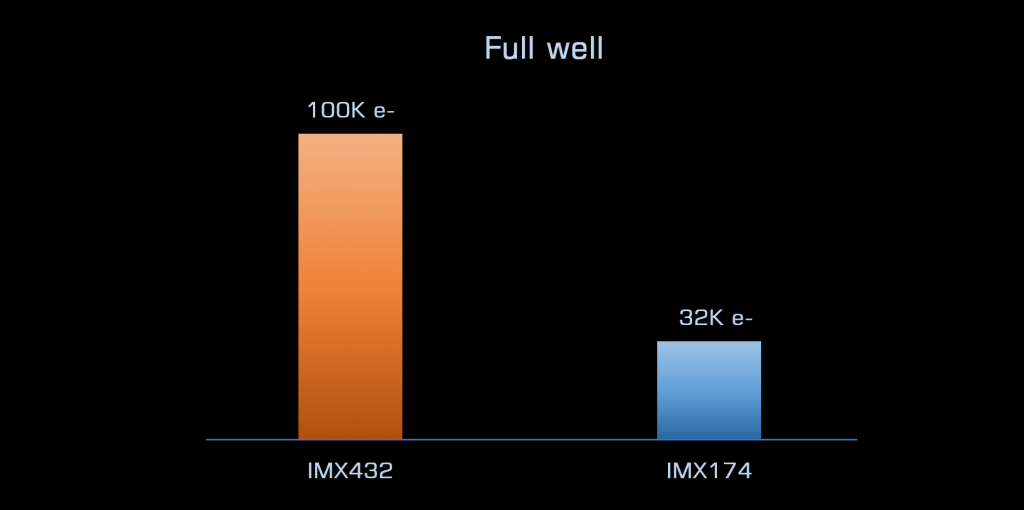
HCG and Noise
HCG mode will automatic open when Gain ≥145, readout noise will drop to 4.6e. And dynamic range will rise to 12 drops again.
At 380 gain, readout noise of Apollo-M MAX (IMX432) camera is 2.6e, it is lower than IMX174. And full well will still bigger than IMX174.
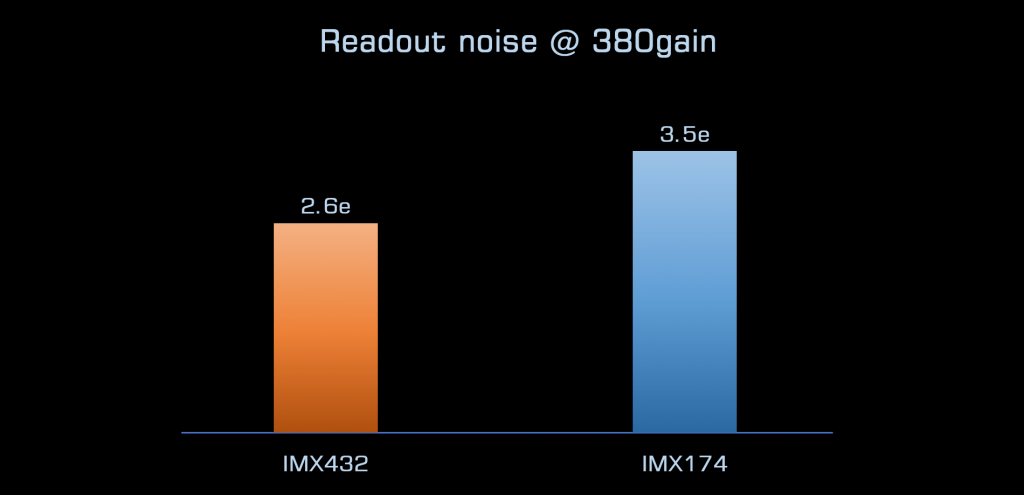
Highlights
New Solar Ha imaging and post-processing tutorial (Demonstrate with Apollo-M MAX)
No banding
Row noise problem is a big trouble in solar imaging. When we use IMX174 or IMX178 cameras, bandings occurs sometimes. Although we can make it slight in post-processing, but it still does negative affect on the details.
The biggest surprise in testing Apollo-M MAX is, we found that images of IMX432 are so smooth, no annoying horizontal banding. So that, we can focus on capture details in any focal ratio, in any way ( full disk mosaic or ROI ) , never need to worry about banding issue in post-processing.
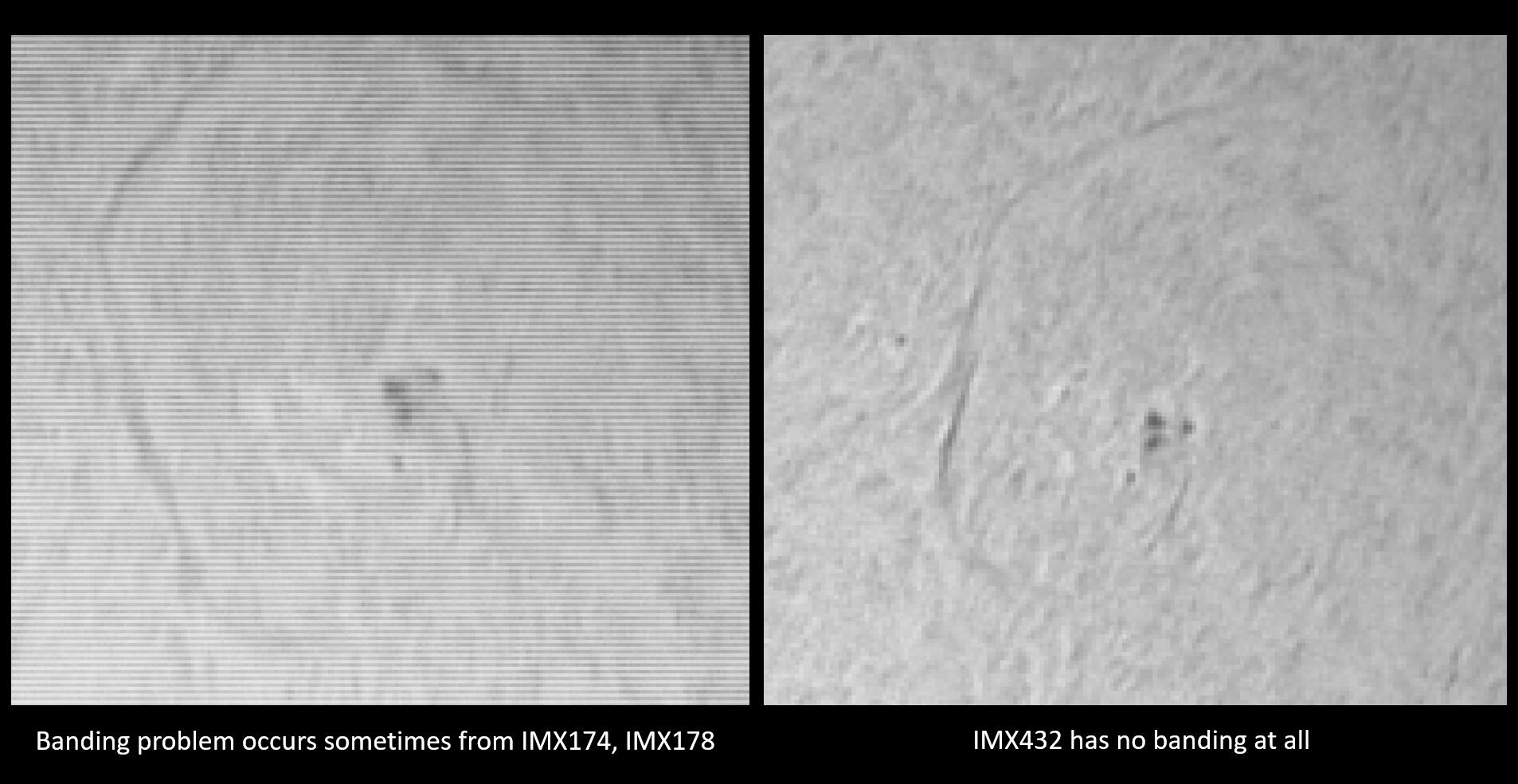
With global shutter, Apollo-M MAX are very suitable for sun and space station imaging.

“The official recommended camera of The Charlie Bates Solar Astronomy Project“
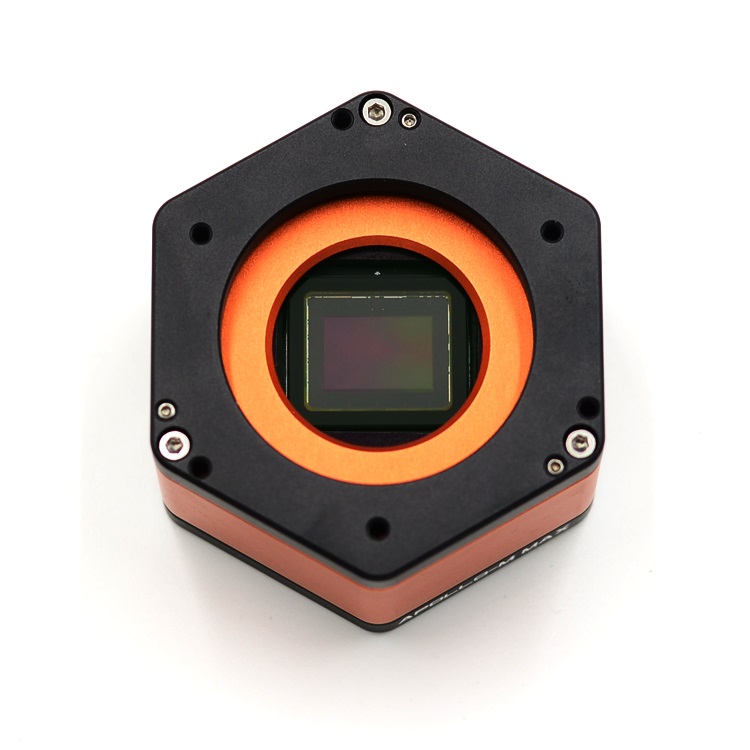
Recommended accessories:
ACS (Active Cooling System)
ACS is a external air-cooled system, designed for solar and big format planetary cameras which already has PCS (Passive Cooling System). ACS can provide much better temperature control. When camera has PCS + ACS, temperature is only 7℃ higher than ambient, camera body is a little warm but won’t hot! ACS is not only can be used in daylight for solar imaging, it also could be used in night for DSO lucky imaging.
https://player-one-astronomy.com/product/active-cooling-system-acs-for-uncooled-cameras/
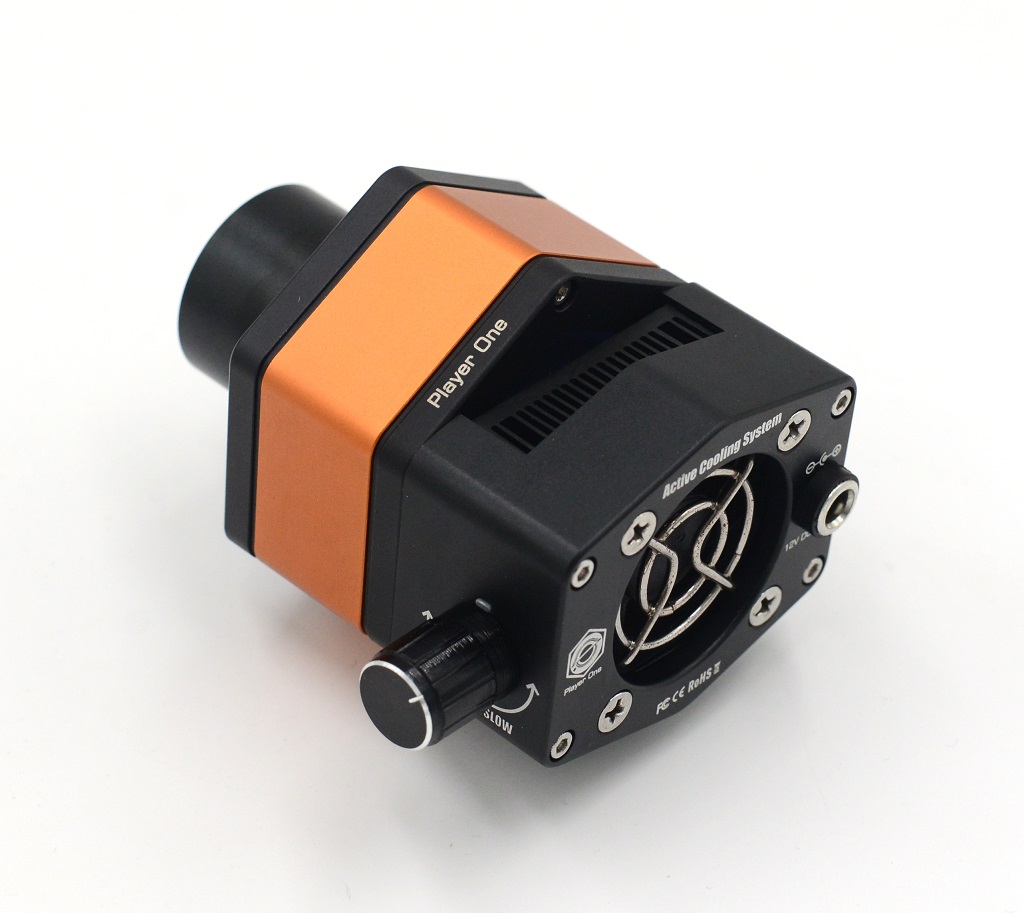
User reference images:
The Sun in White Light
For better contrast, Player One Photosphere 10nm filter will be a good choice.
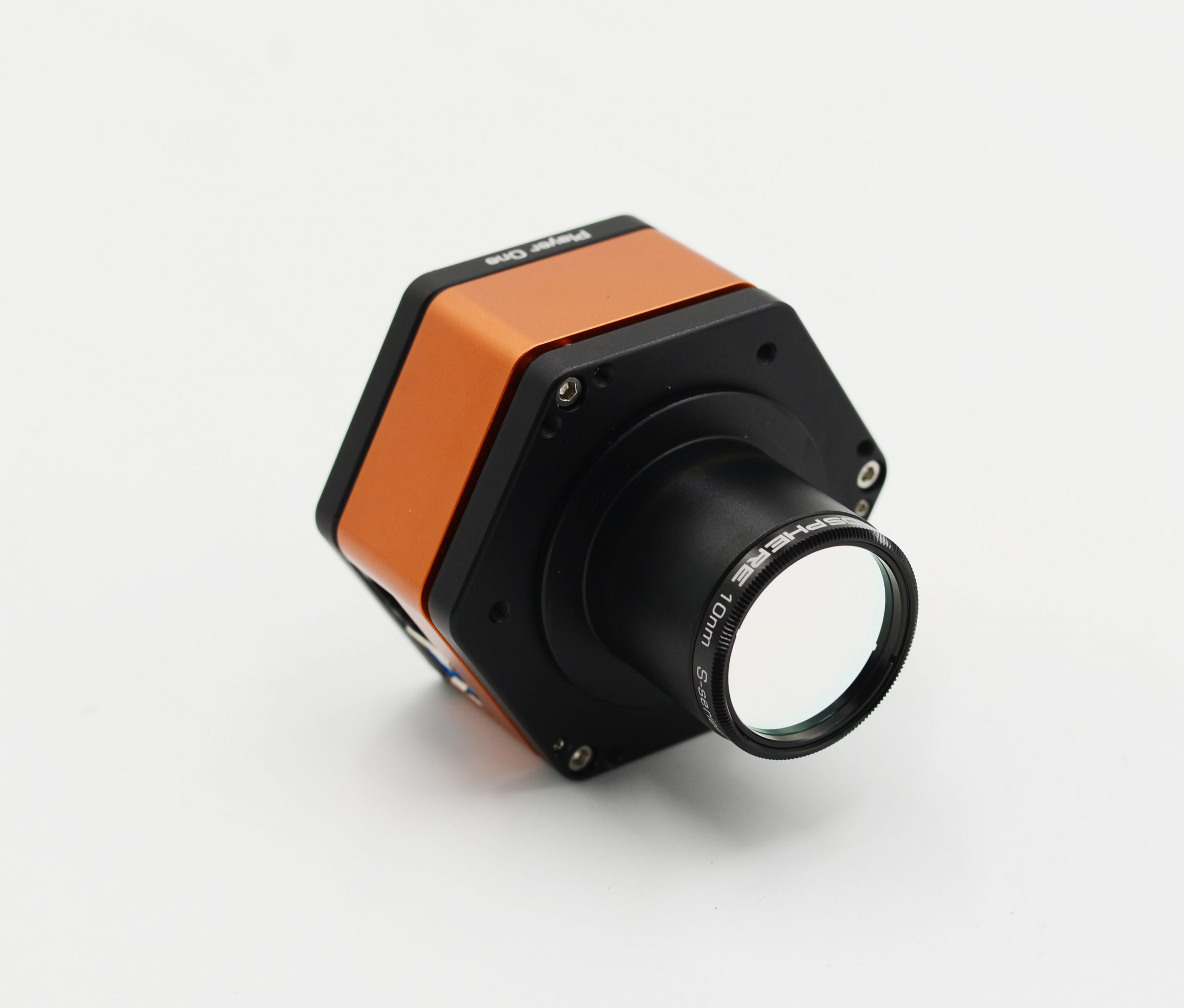
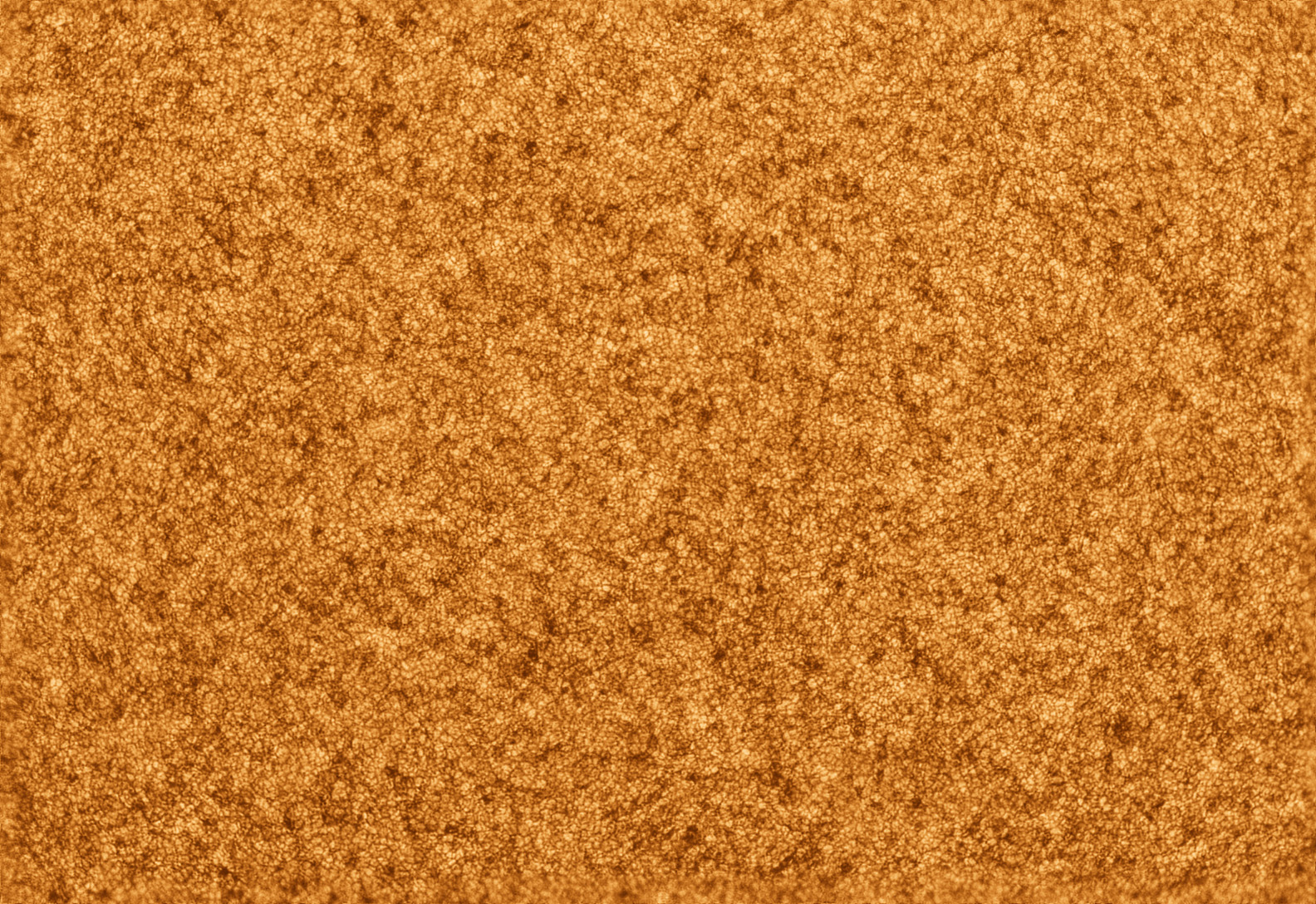
Apollo-M MAX with SW150APO, photo by Simon
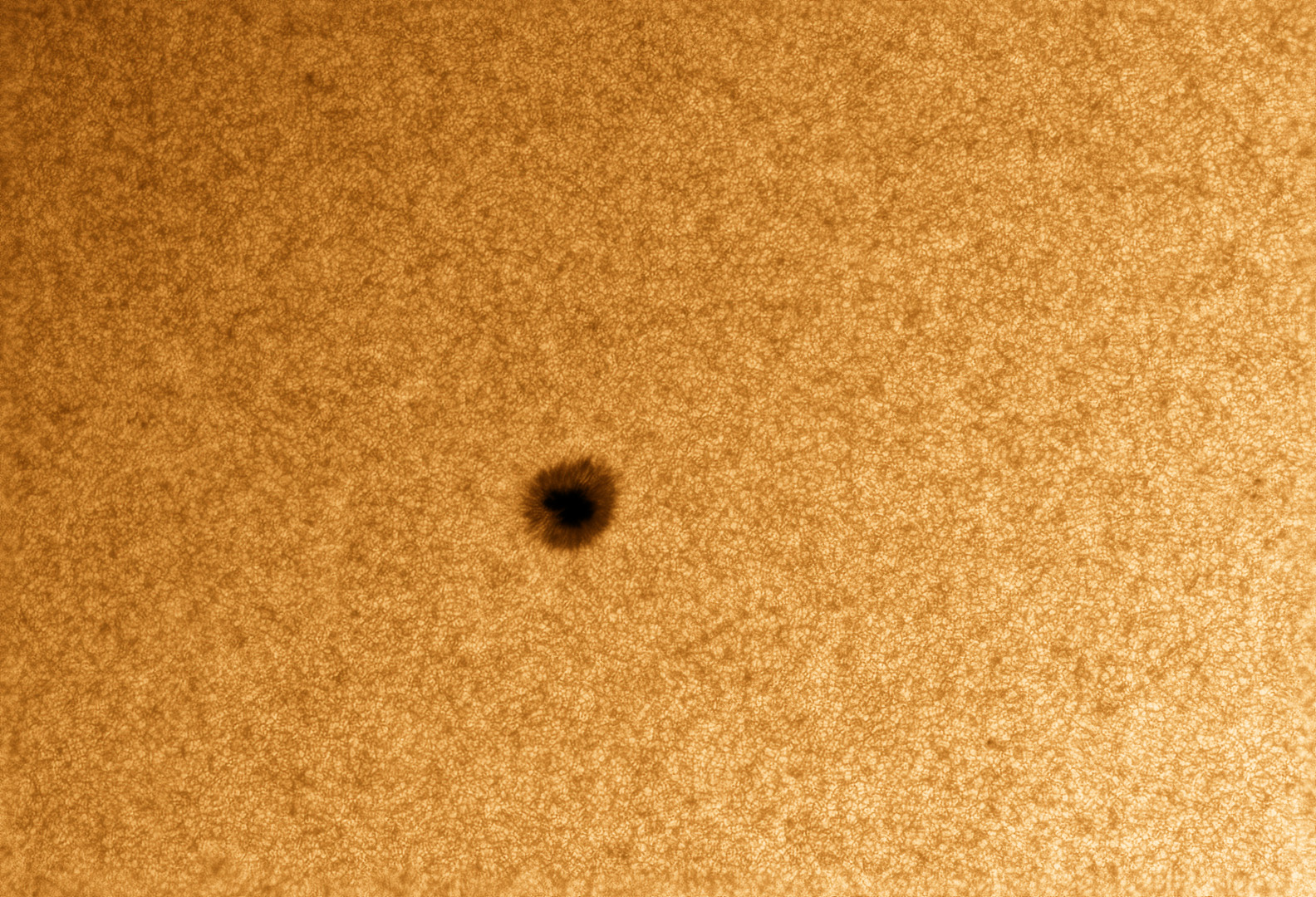
Apollo-M MAX with SW150APO, photo by Simon
Demonstrate with ES127APO:
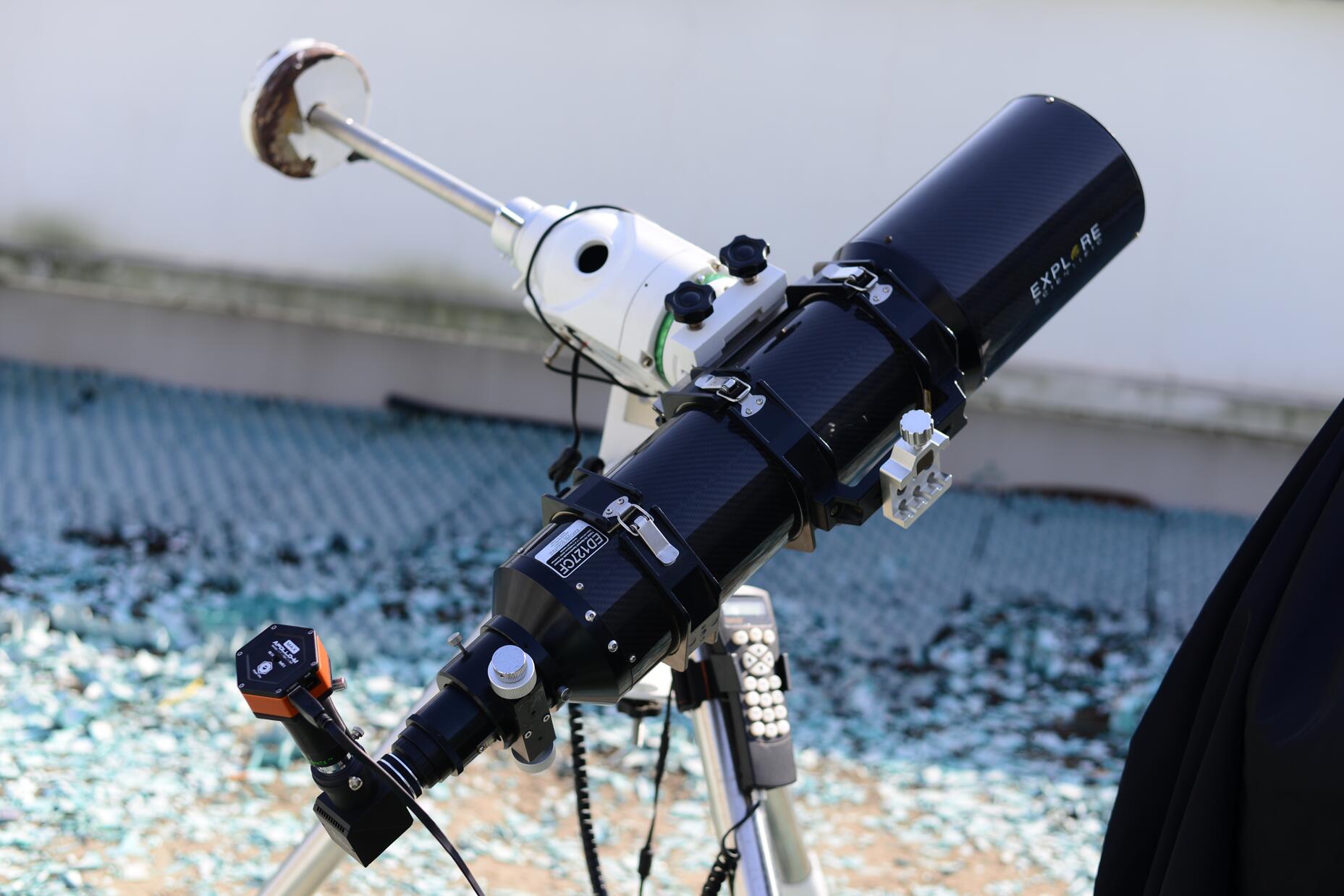
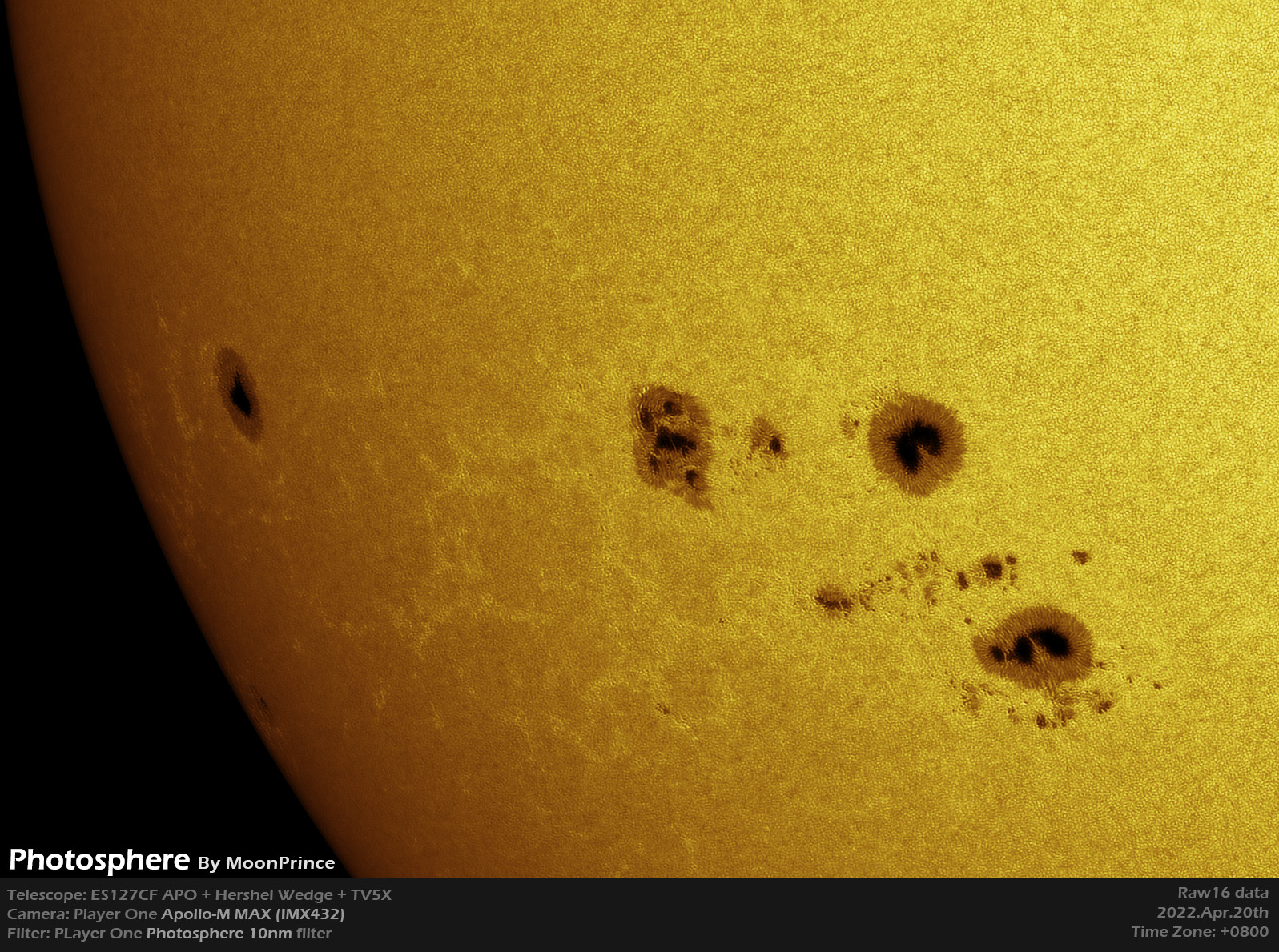
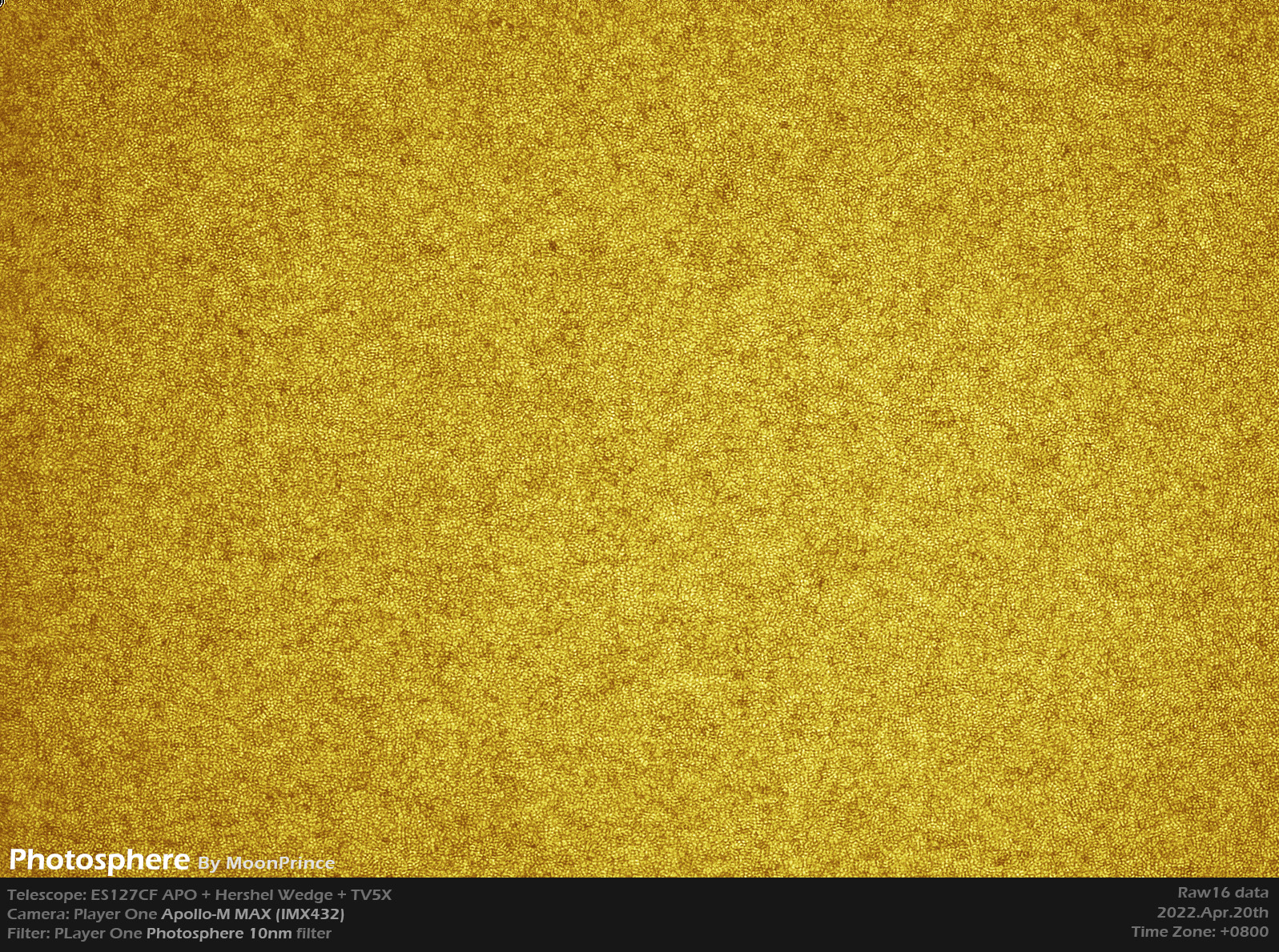
The Chromosphere in H-Alpha
Introduce new 1.25″ ERF filter for Quark Chromosphere (Ha verstion) , intend to reject energy and extend life time of your Quark.
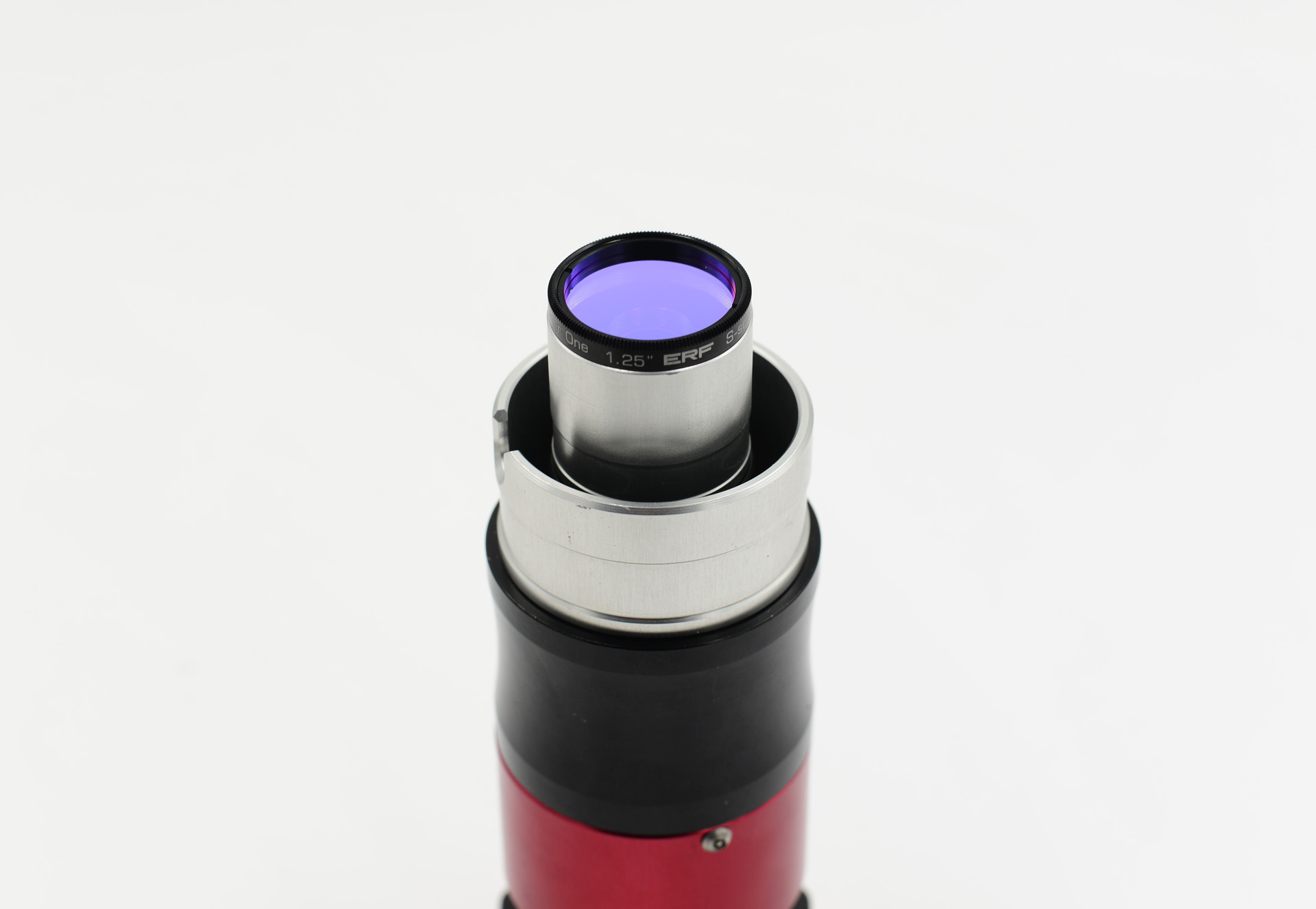

Apollo-M MAX with SW150APO+QUARK Chromosphere, photo by Simon
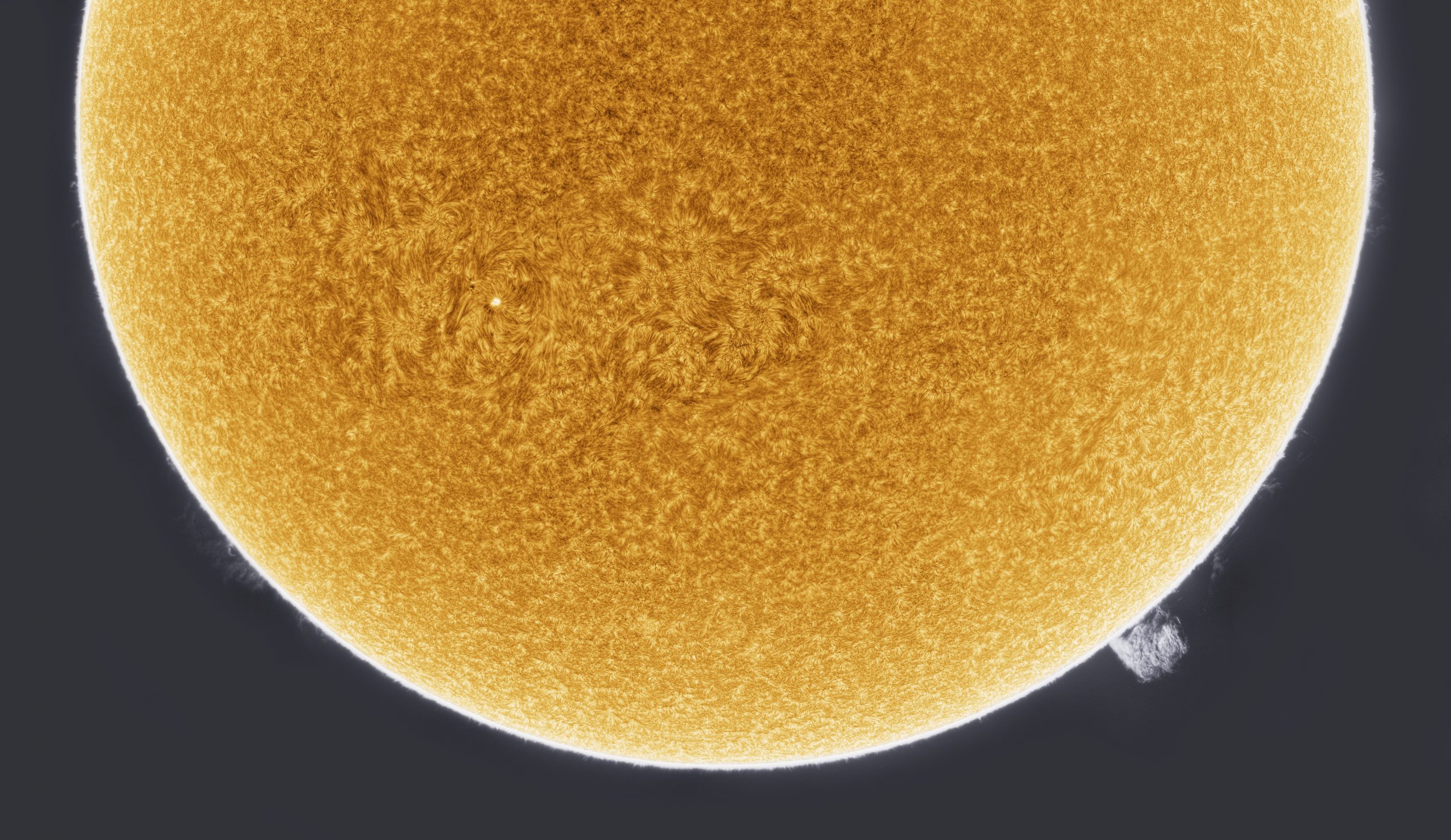
Apollo-M MAX with SW150APO+QUARK Chromosphere, photo by Simon

Apollo-M MAX with SW150APO+QUARK Chromosphere, photo by Simon
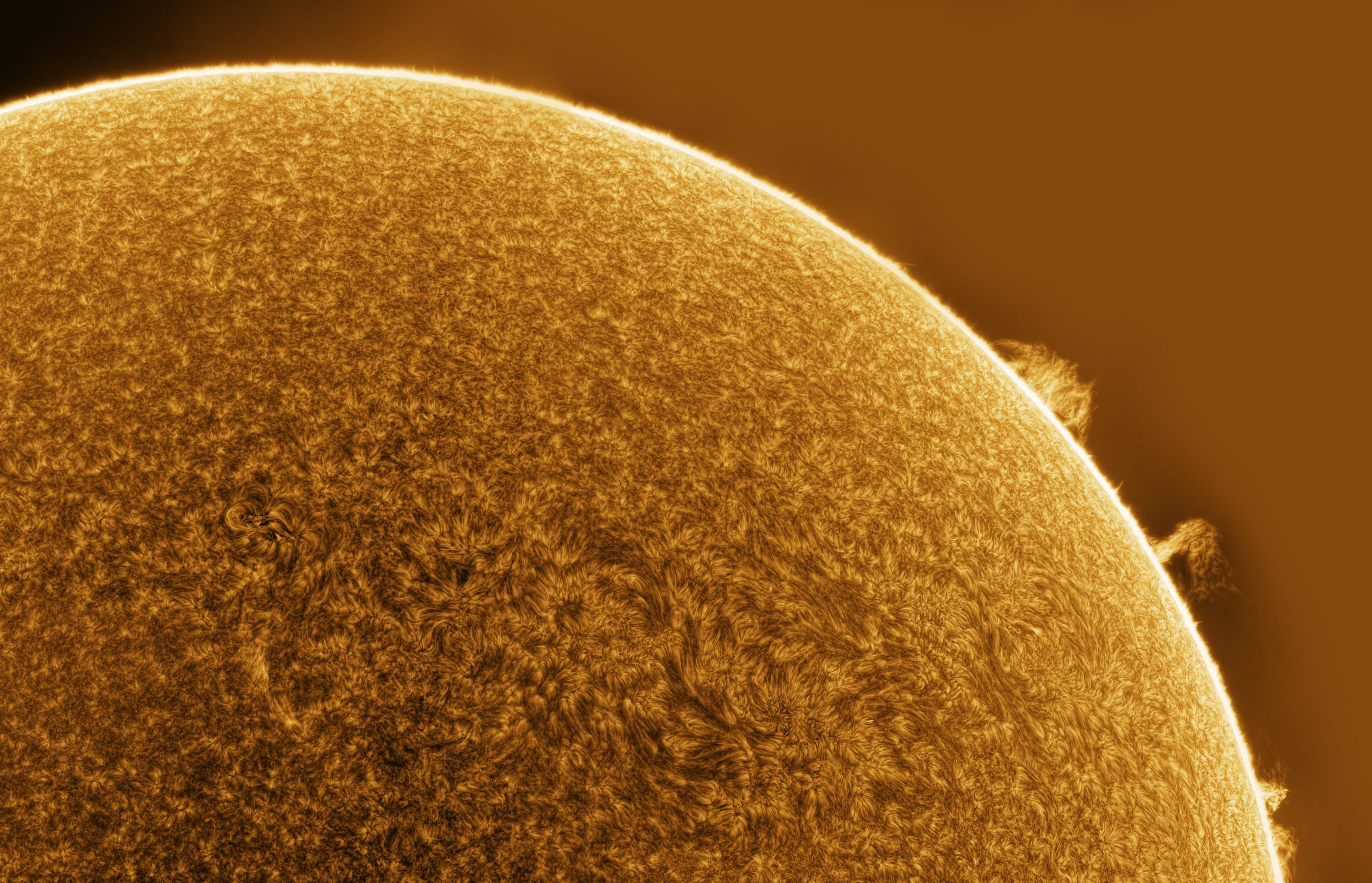
Apollo-M MAX with SW150APO+QUARK Chromosphere, photo by Simon
Demonstrate with 80APO + Quark Chromosphere:

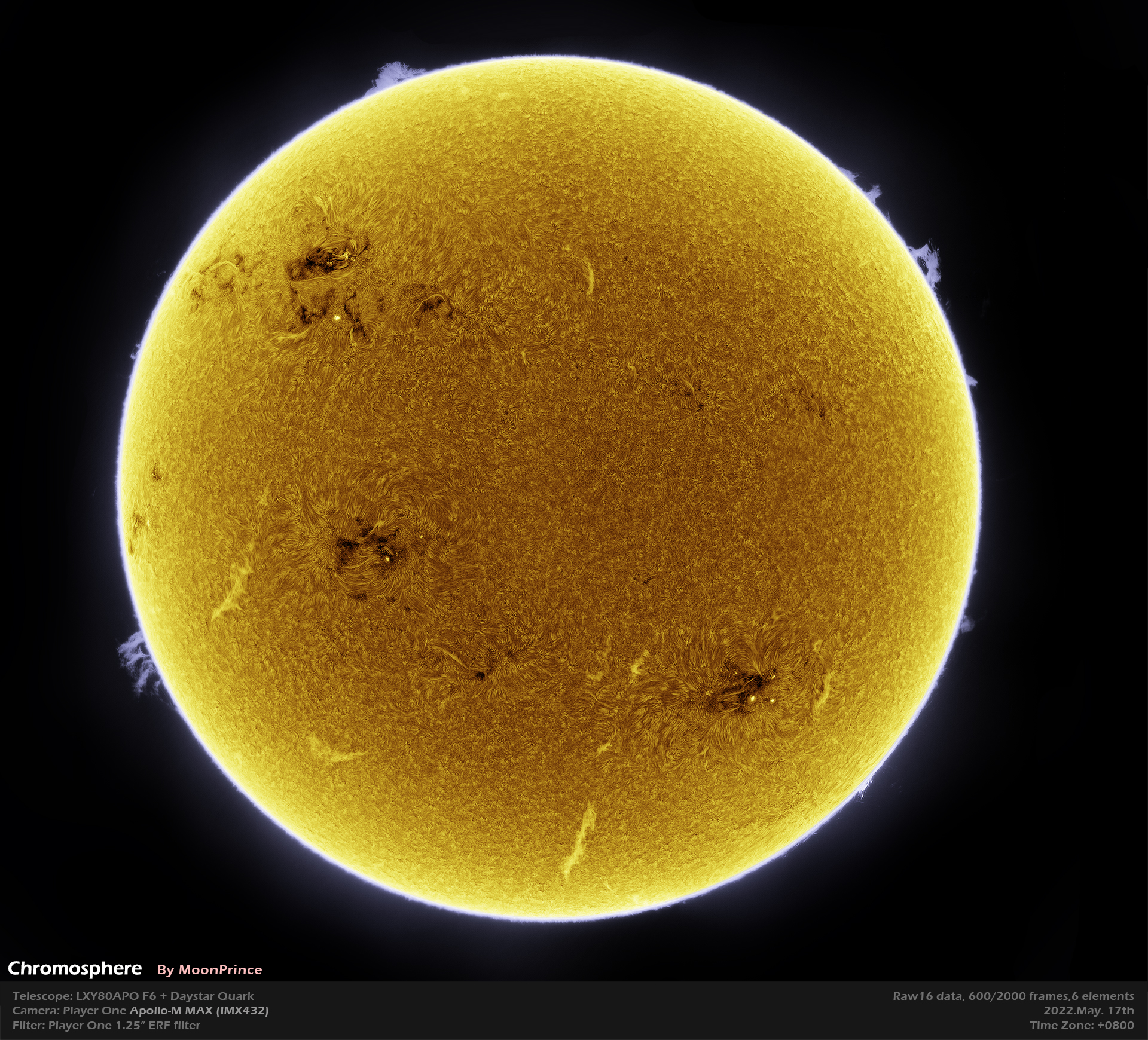
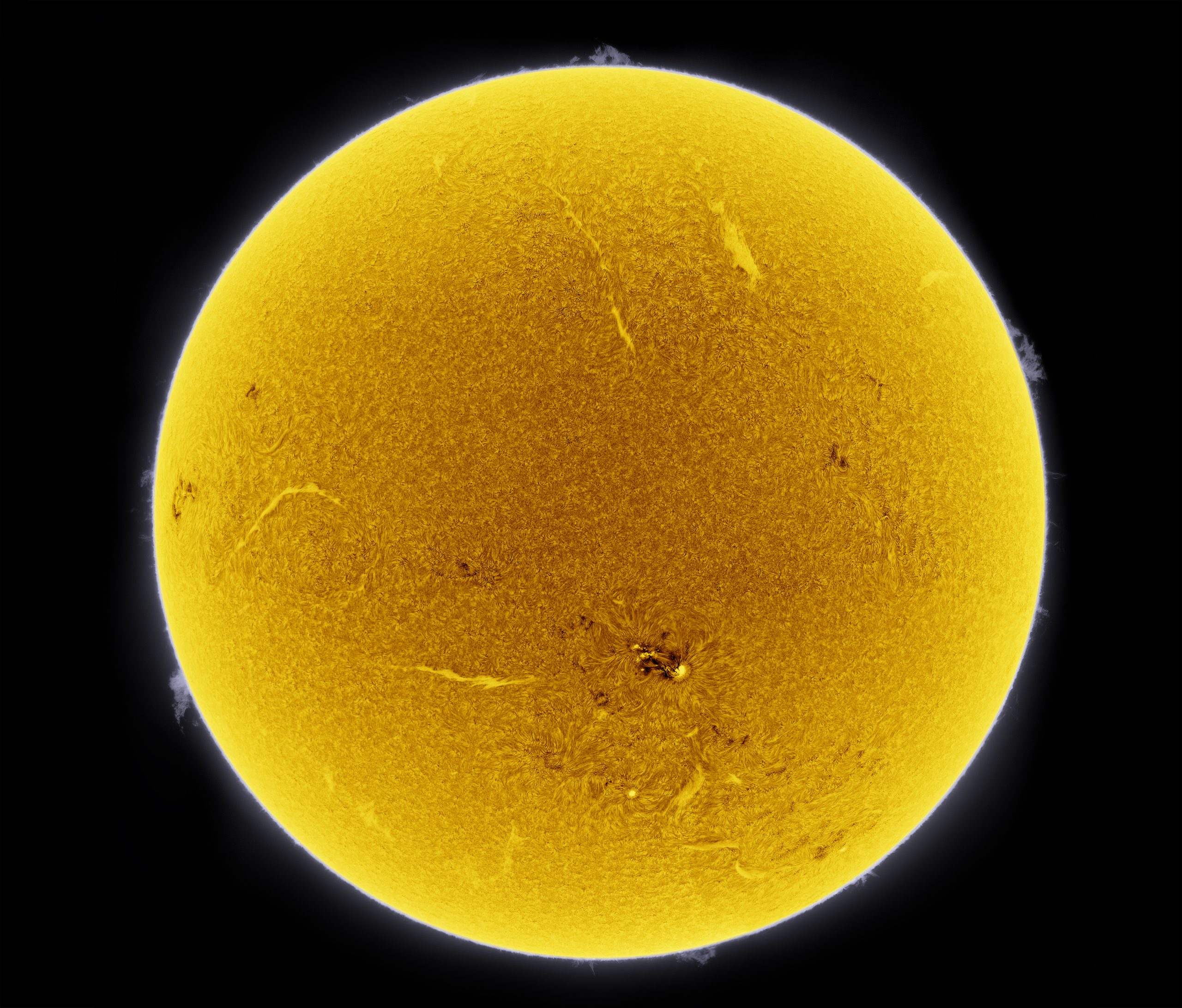

Demonstrate with ES127APO + Quark Chromosphere:
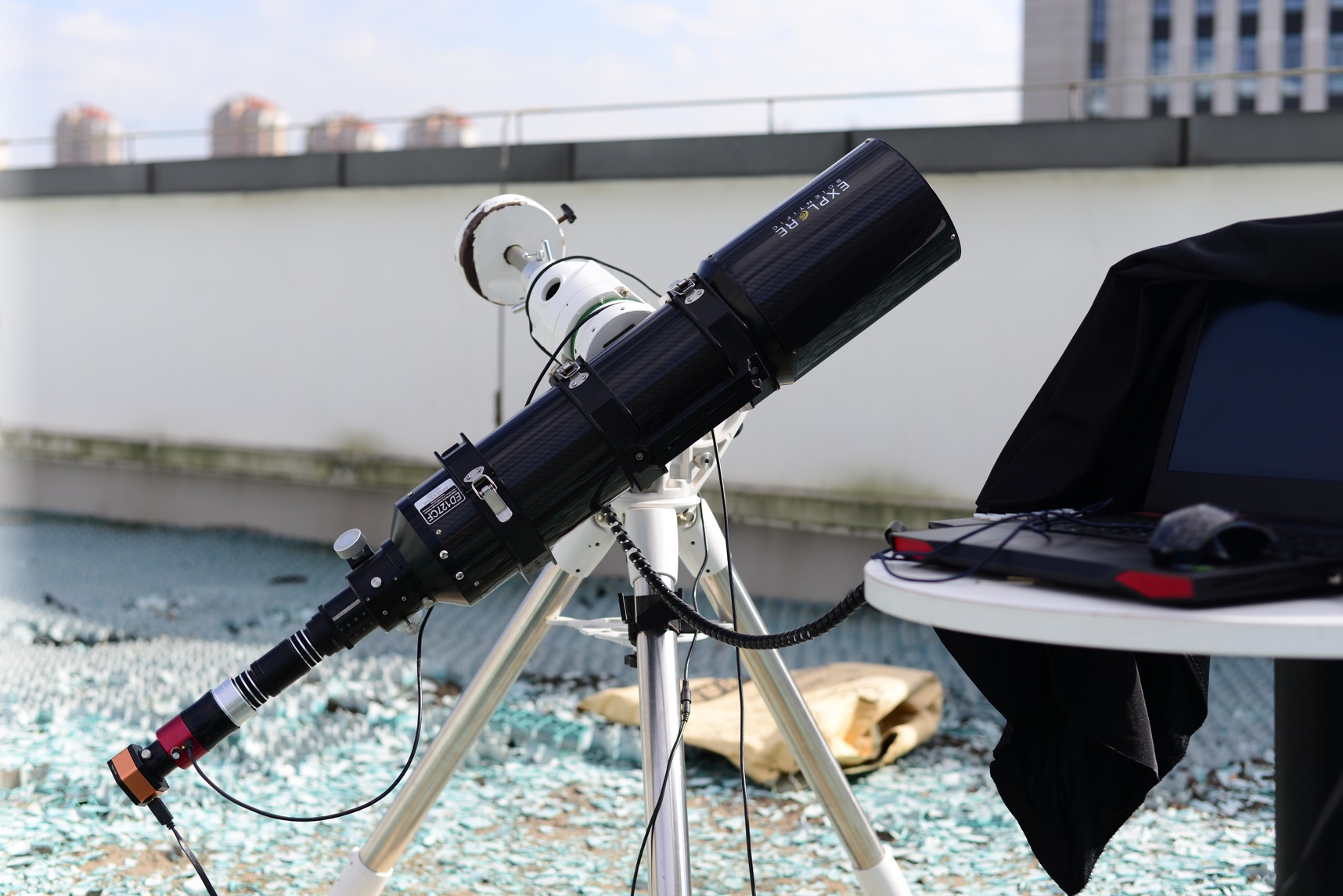
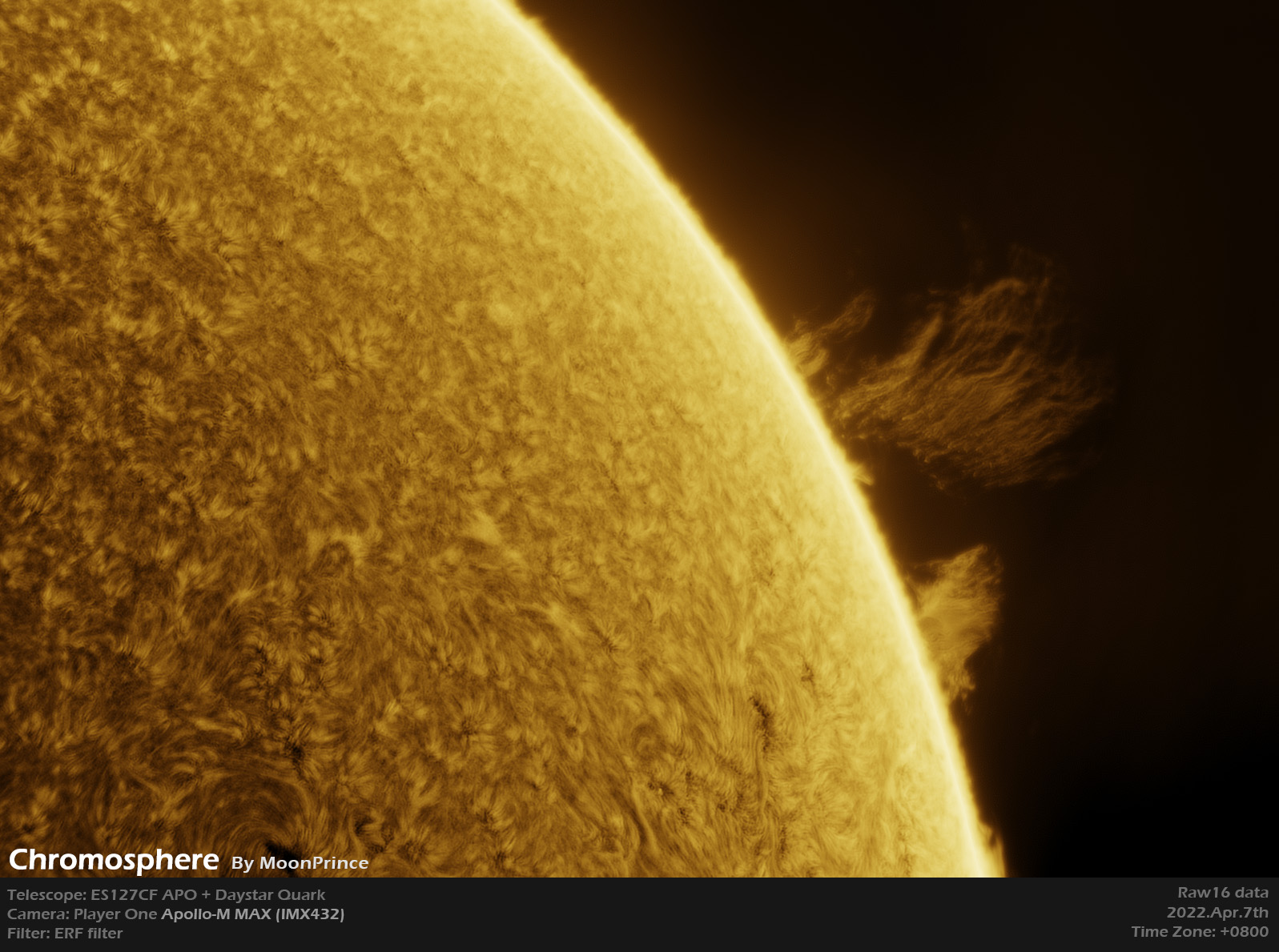
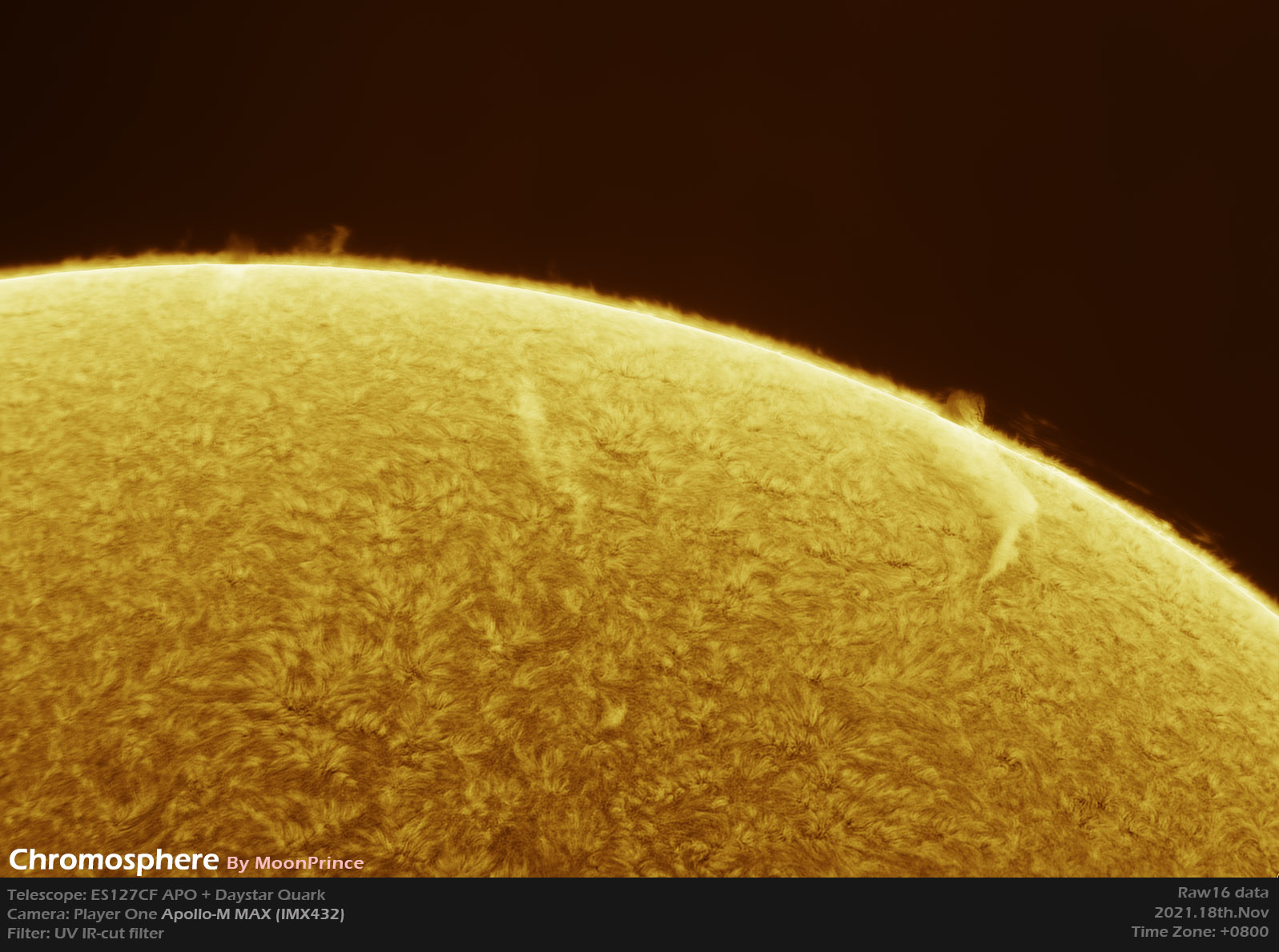
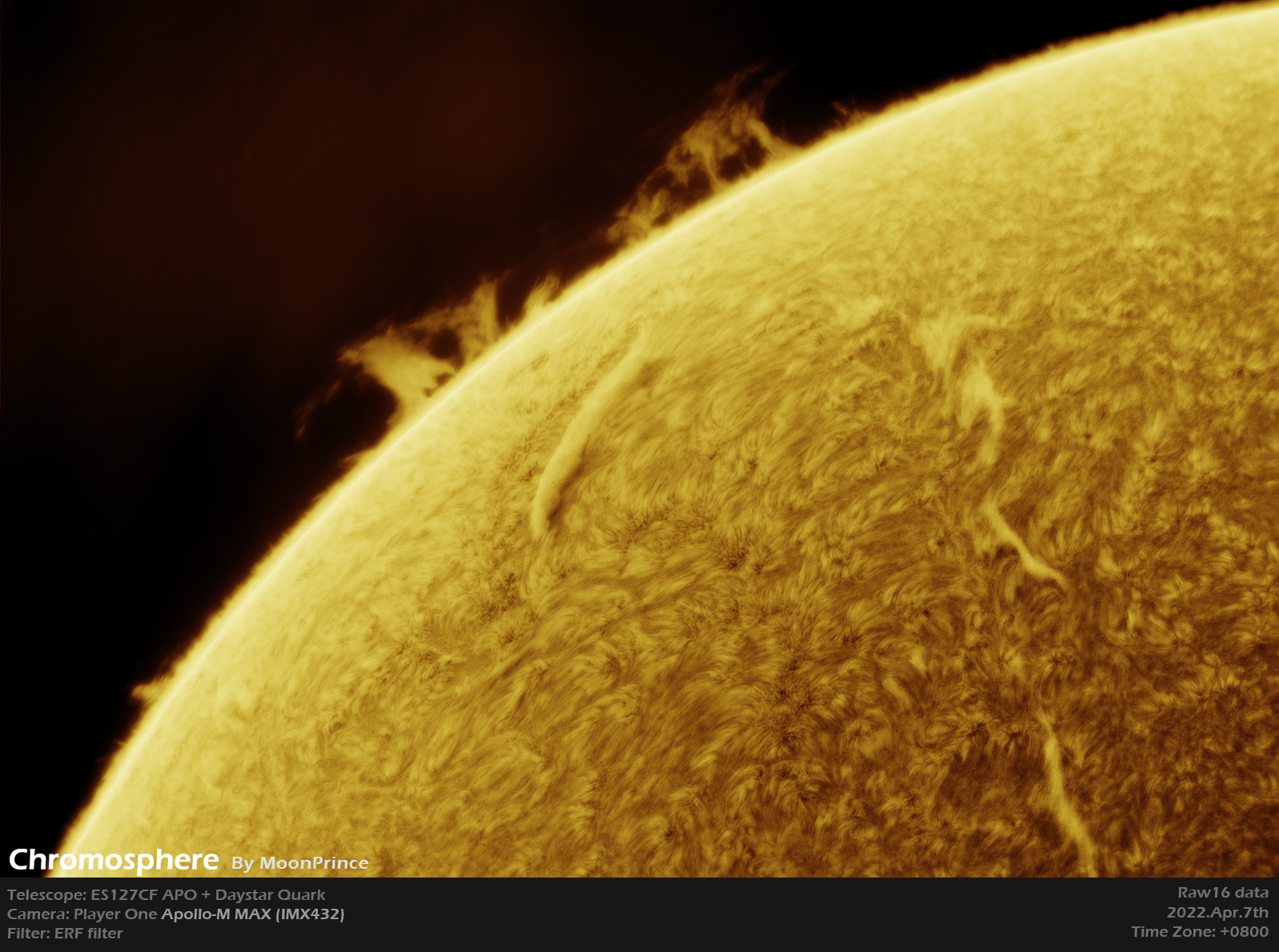
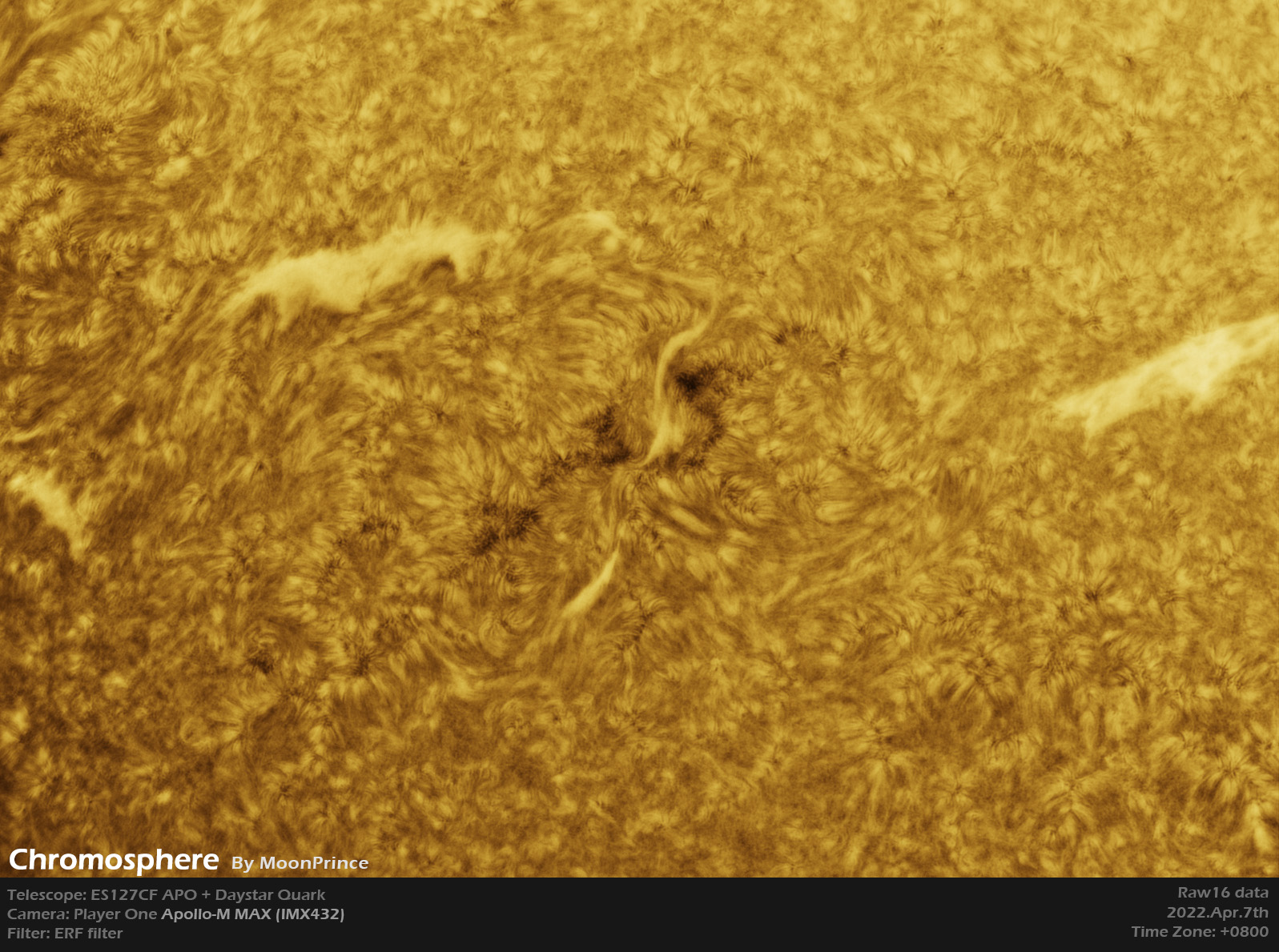
The Preminence in H-Alpha
The Sun in CaK
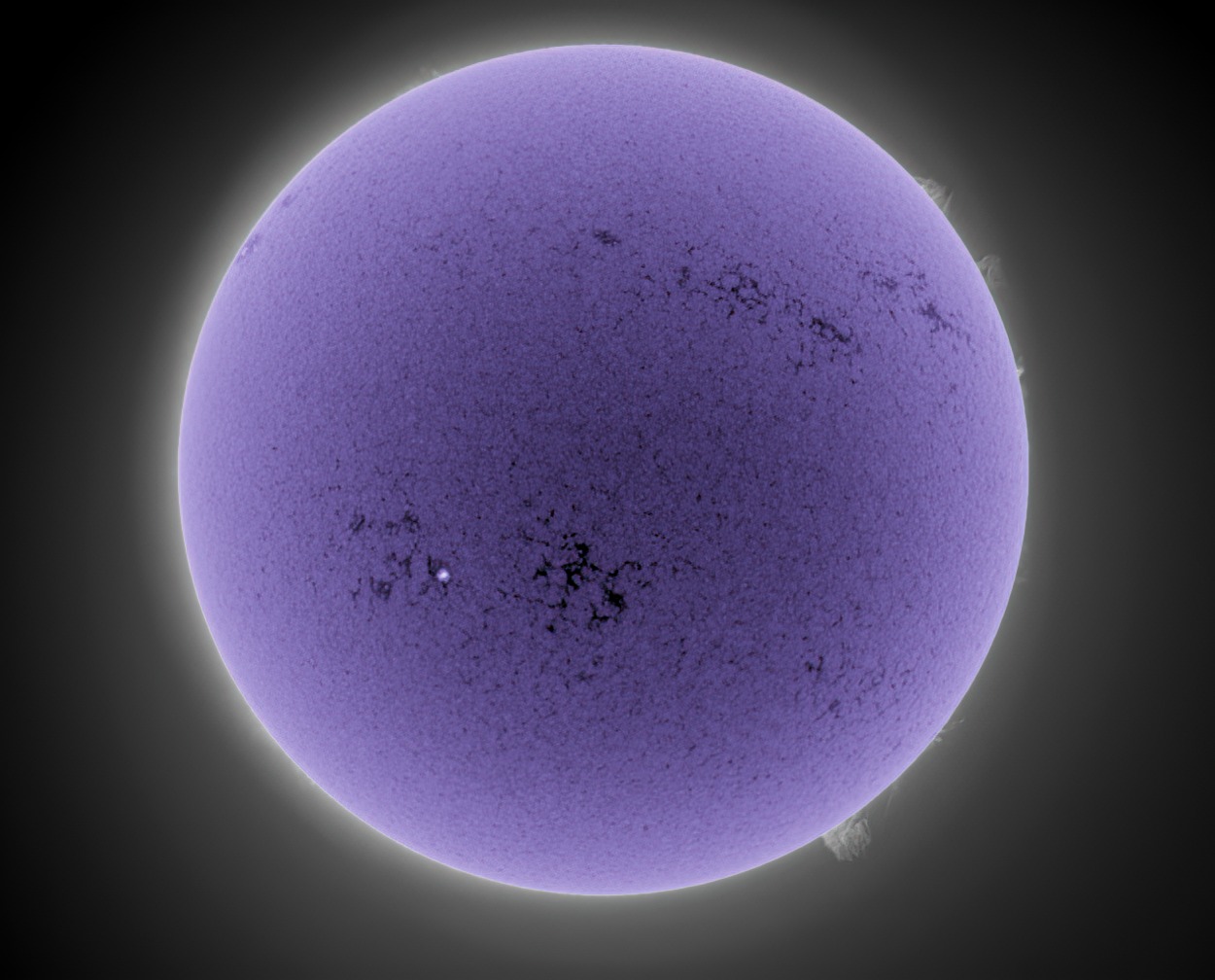
Lunt 152 + Calcium K module + Apollo-M MAX, Photo by Stephen W. Ramsden
Features:
The naming of Player One Astronomy cameras is unique. Solar camera line, named after Apollo, the god of the sun. The suffix of the name describes the camera’s biggest feature.
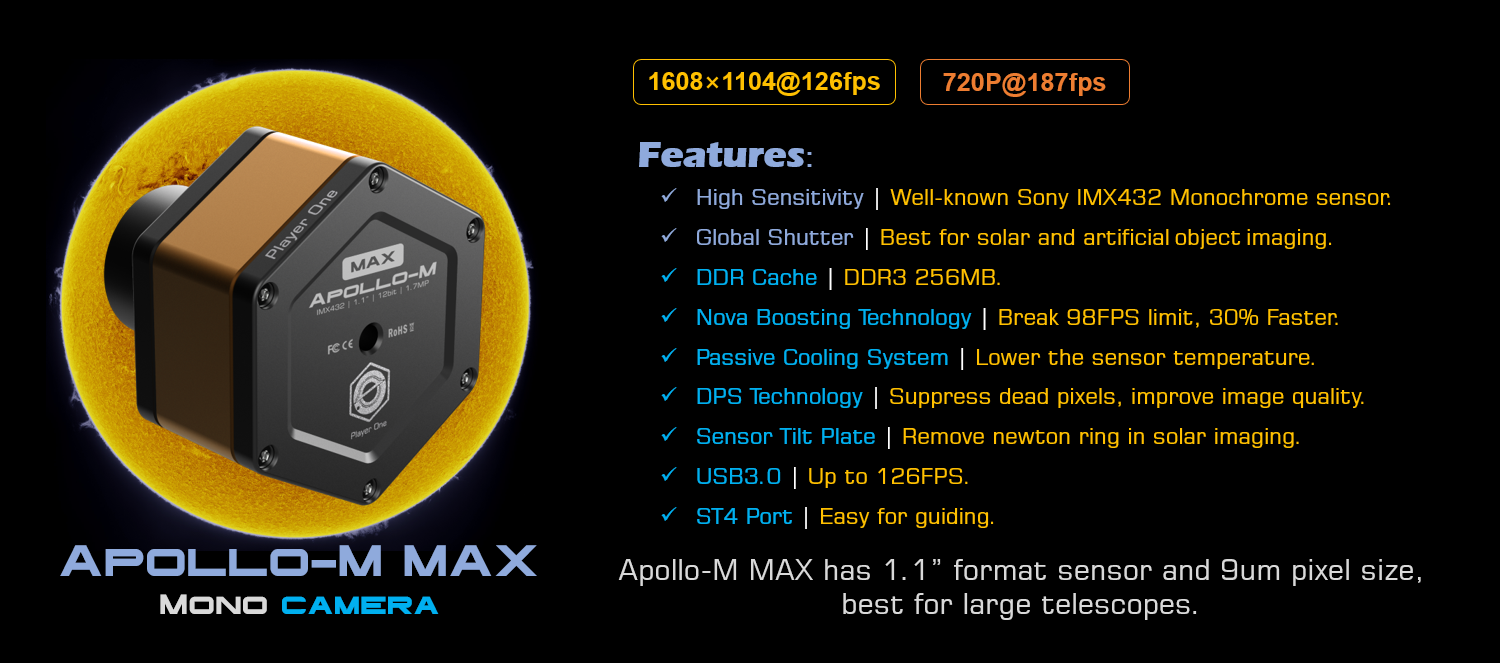
Drivers and softwares download: http://player-one-astronomy.com/service/software/
Manuals download: http://player-one-astronomy.com/service/manuals/
Cutting-edge Design
The planetary cameras developed by Player One Astronomy uses a scientific and technological regular hexagon to construct the main body line, supplemented by round chamfers to achieve both rigidity and flexibility. The positive orange, which is imply solar, is matched with the low-key and steady black, and the super-fine frosting process on the entire surface makes the camera look luxurious and cool, highlighting the style of high-end players, can’t take my eyes off 😀
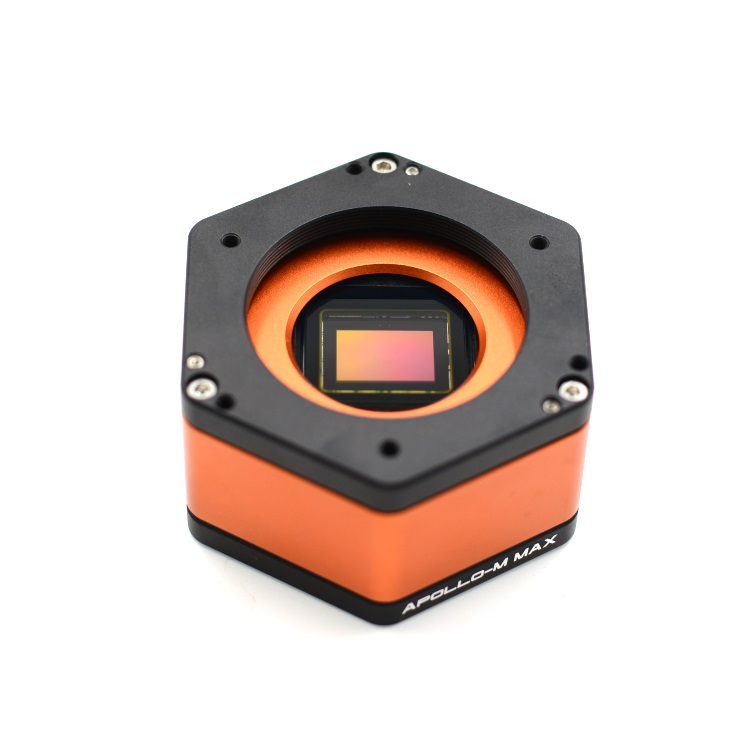
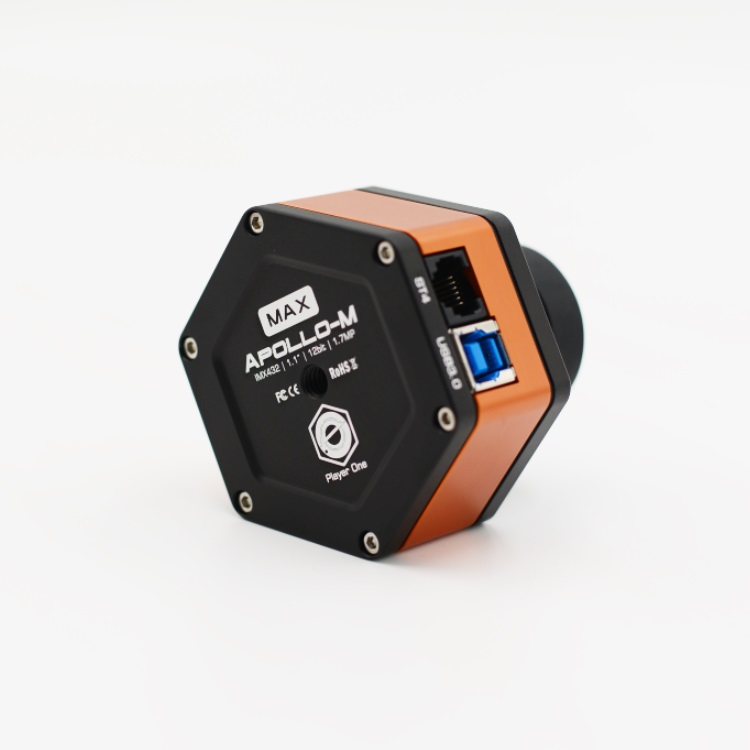
2nd Gen – Sensor Tilt Plate
When taking solar photograph with prominence telescope, the Newton ring is annoying. Smoother solar image without Newton ring could be taken by adjusting the focal plate. Get a much smaller field curvature of the telescope.

The built-in high-density sponge shading pad can block the light from the side slits without any side leakage.
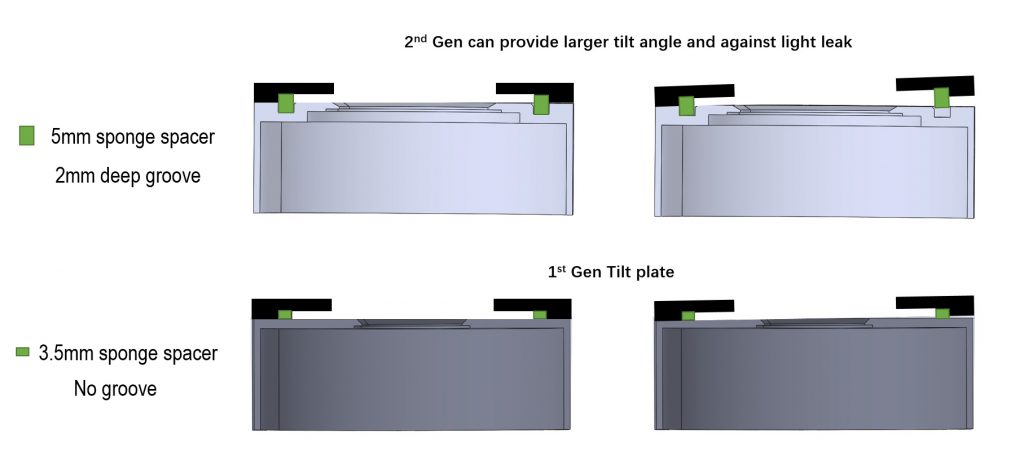
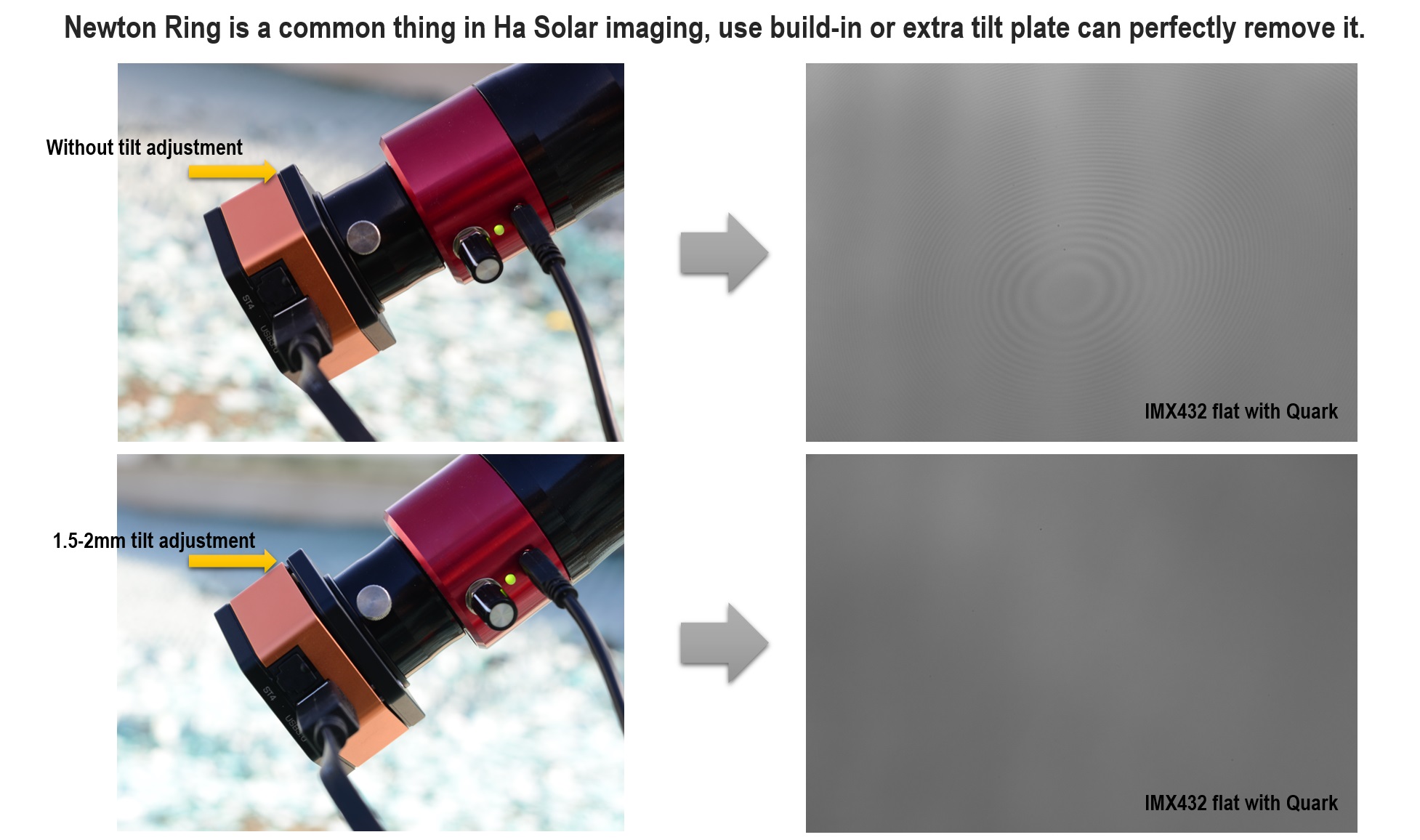
Passive Cooling System
Solar cameras working in daylight, temperature could be much higher than night. Heat of global shutter sensors will be a problem, especially some big format like IMX432. Player One add one new feature called Passive Cooling System to conduct the heat from the sensor out.
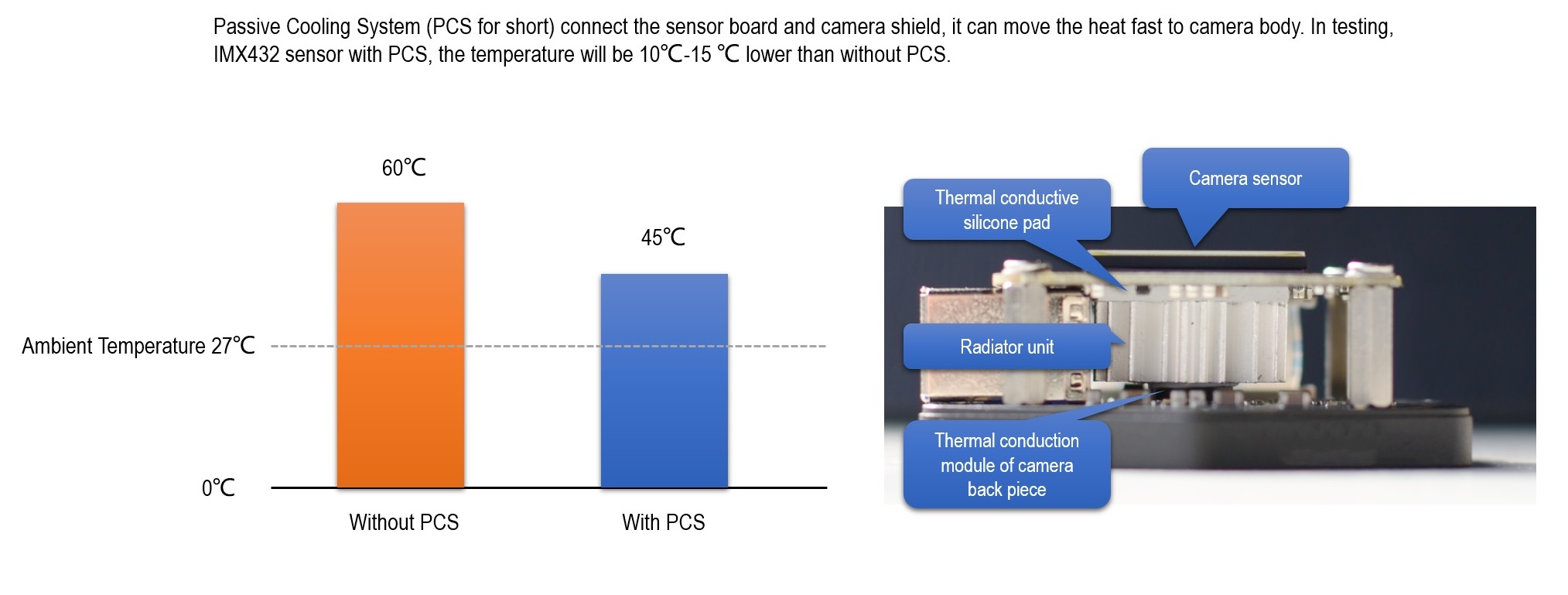
256M DDR3 Cache
Player One Astronomy cameras are the first one who adpots the DDR3 cache in all planetary cameras in the world! It helps stabilize and secure data transmission, it effectively avoids frame dropping and greatly reduces readnoise.
With the DDR3 cache, the camera does not have high demands on computing needs any longer, it will still has excellent performance even if it is connected to a USB 2.0 port.

DPS technology
The planetary cameras from Player One Astronomy have DPS (Dead Pixel Suppression) technology. The DPS is anaylse many dark frames to find out thoes fixed abnormal pixel and record the map in camera memory. In imaging, each exposure frames, thoes position of dead pixels will be given a median value according to the active pixels around that abnormal pixel.

Overvoltage and overcurrent protection mechanism
Player One cameras produced by the number one player ensures the safety of your camera and other equipment through overvoltage and overcurrent protection mechanisms.
Data Port
When the camera is connected to the USB3.0 interface and full-resolution preview is used, it can reach 109FPS in 12bit (RAW16) and 126FPS 10bit(RAW8) mode. When recording images, since the actual writing speed will be affected by the writing speed of the hard disk itself, when the hard disk writing speed is slow, the recording may not reach the theoretical speed. It is recommended that you use a high-quality solid state drive to record data to give full play to the performance of the camera.
Use the ST4 guide cable to connect the camera and the AUTO GUIDE port of the equatorial mount to do guiding.
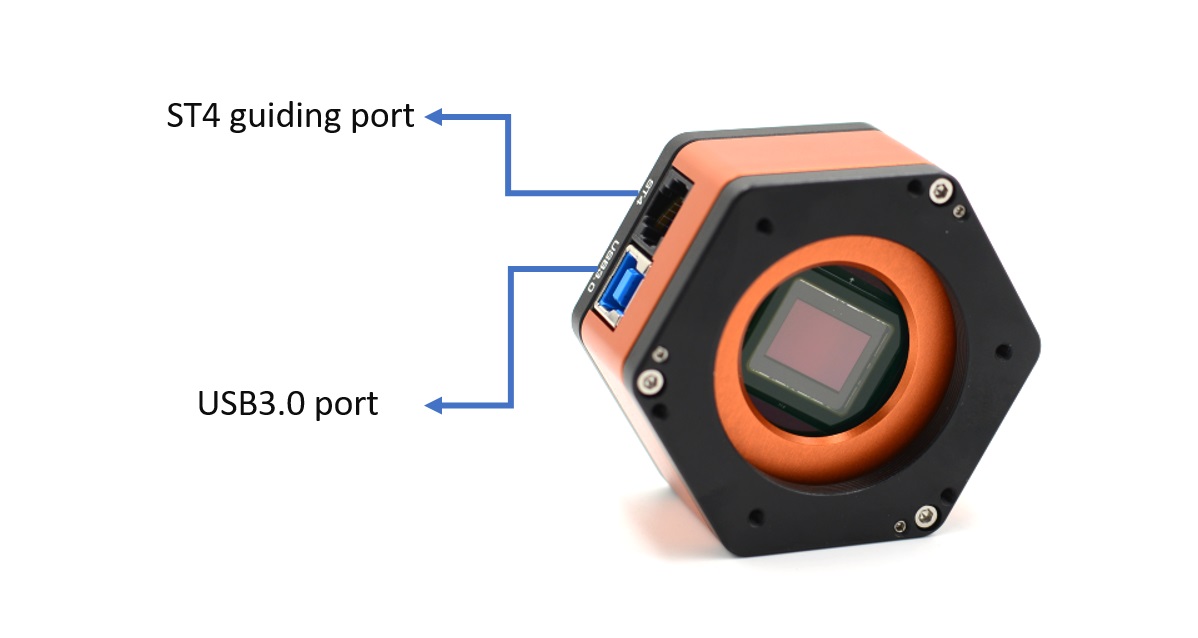
Performance
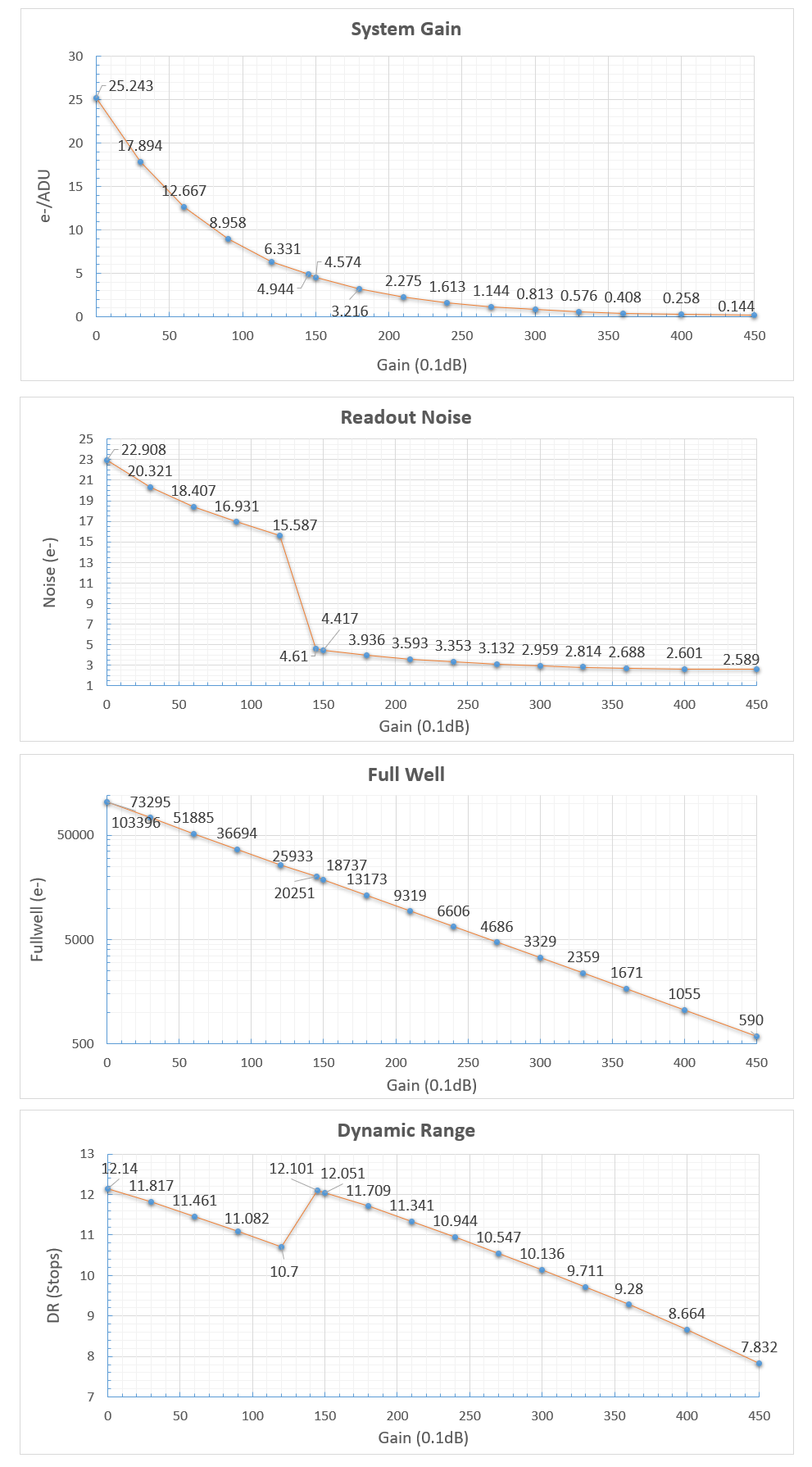
Readout Noise
Regarding readout noise, we solemnly promise that all values are obtained from actual tests. And for users, you could use Sharpcap 4 for testing. SC4 has a function called Sensor Analysis, provide a very simple way to test readout noise.
We wrote a tutorial on our website: https://player-one-astronomy.com/service/manuals/
After many rigorous readout noise tests, this camera can reach a low readout noise of 2.6e at a gain of 380.
If you are interested in readout noise testing, you may try it yourself, which is very simple.
QE Curve
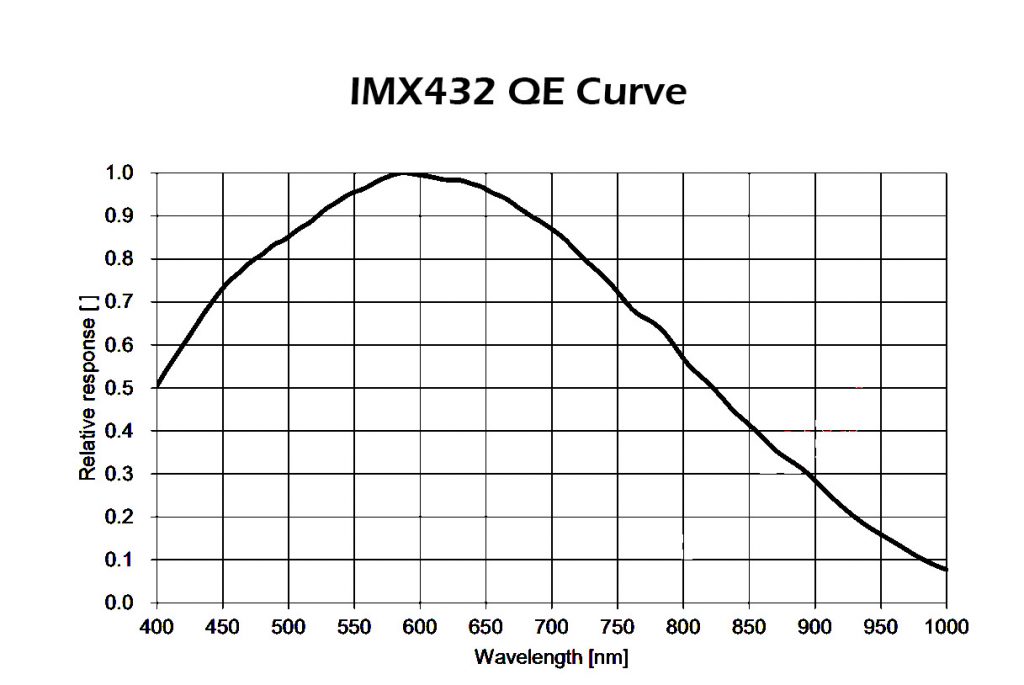
HCG Mode
The Apollo-M MAX camera has a unique HCG mode, which will automatically turn on when the camera gain setting is >145. The HCG mode can greatly reduce the readout noise and retain the same high dynamic range as the low gain.
Mechanical Drawing
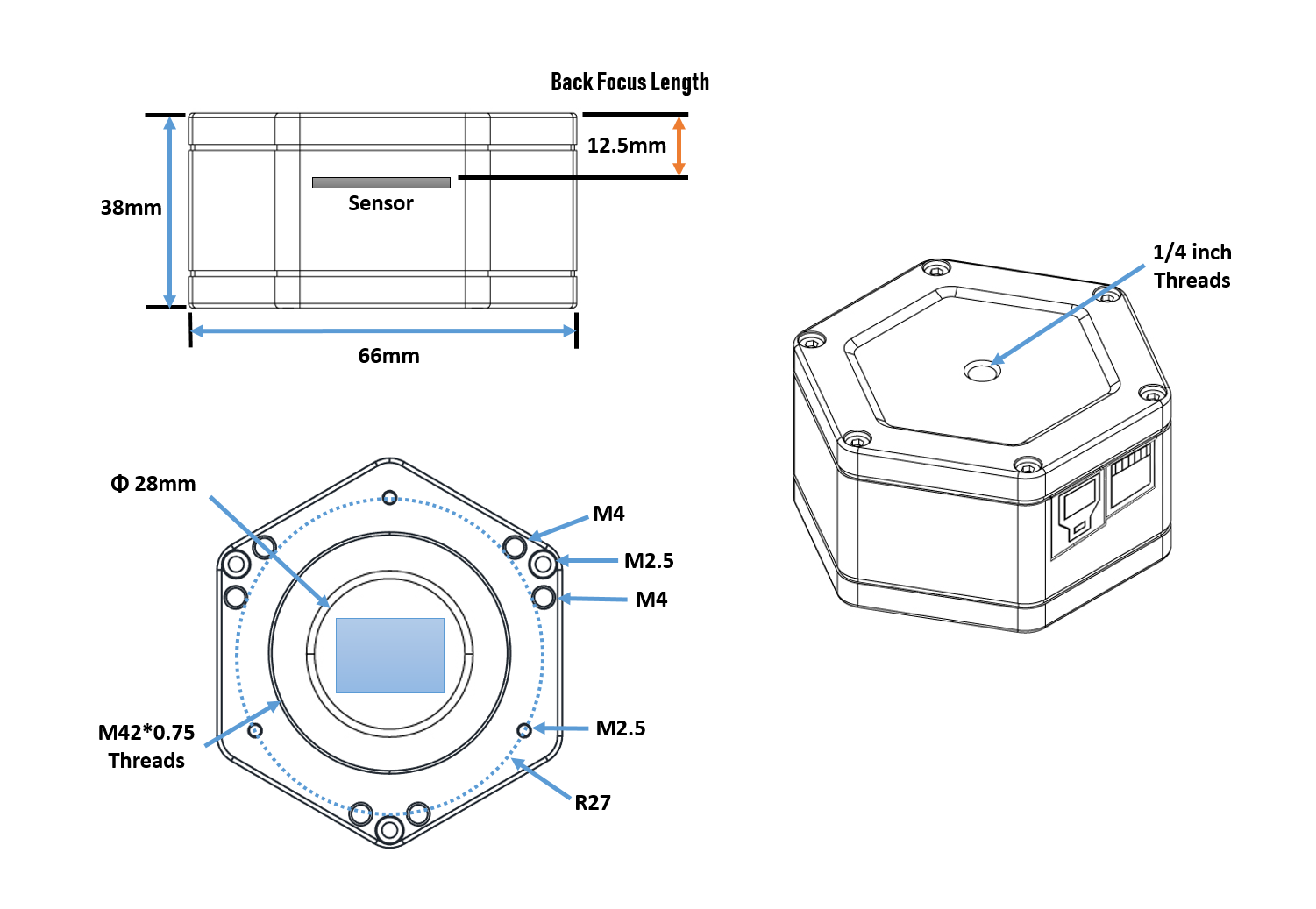
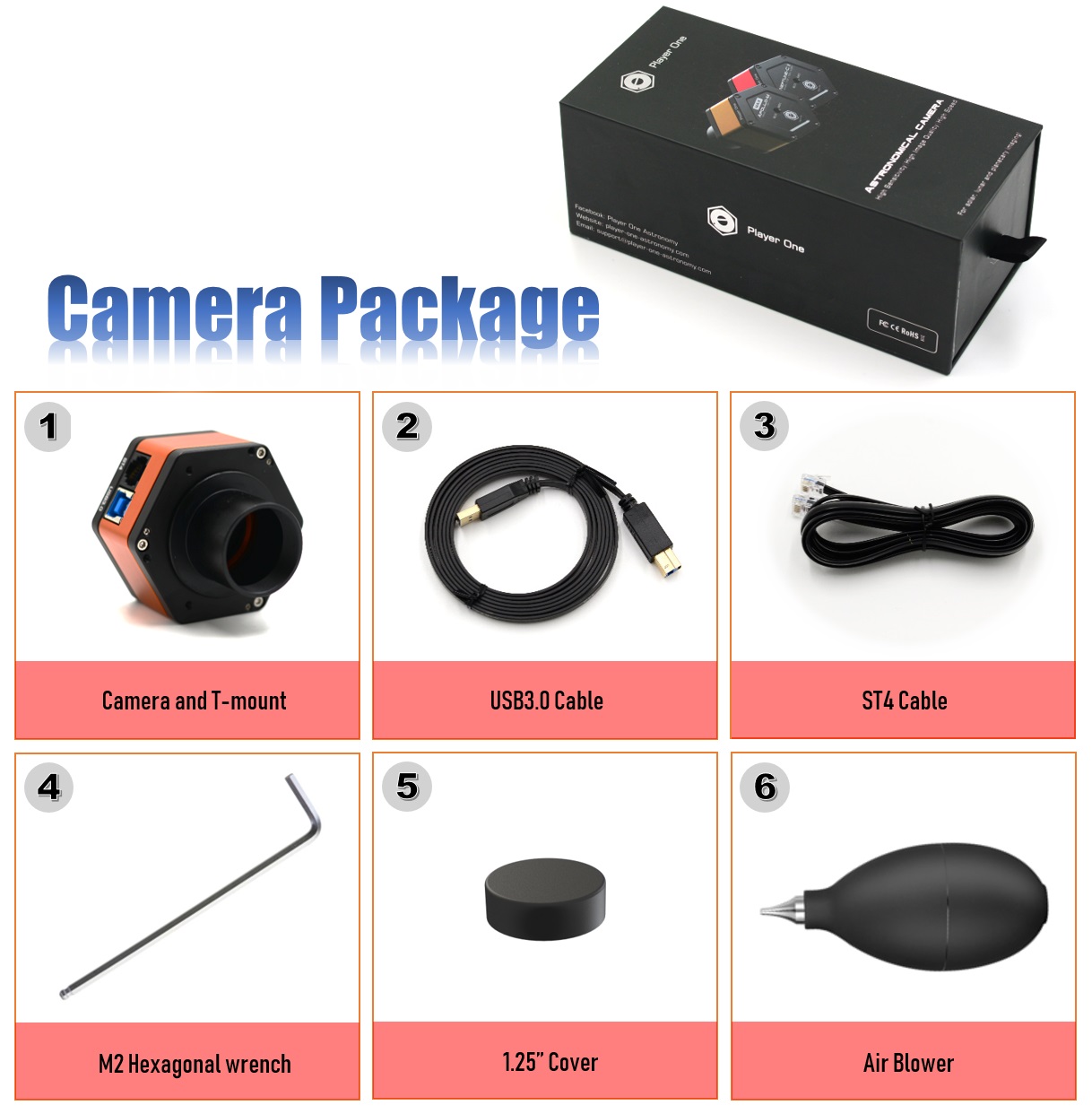
-白底-small100-200x78.jpg)

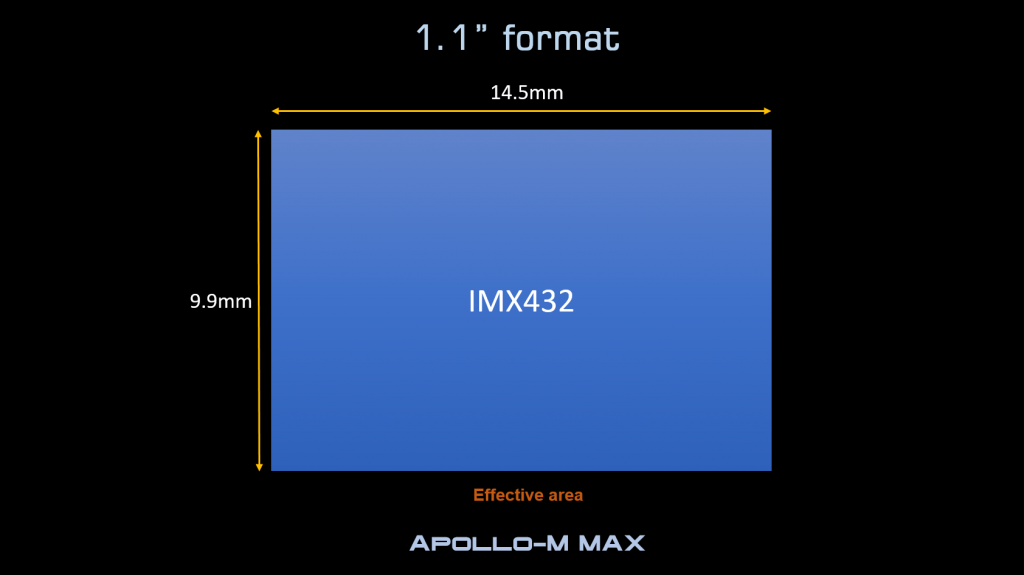
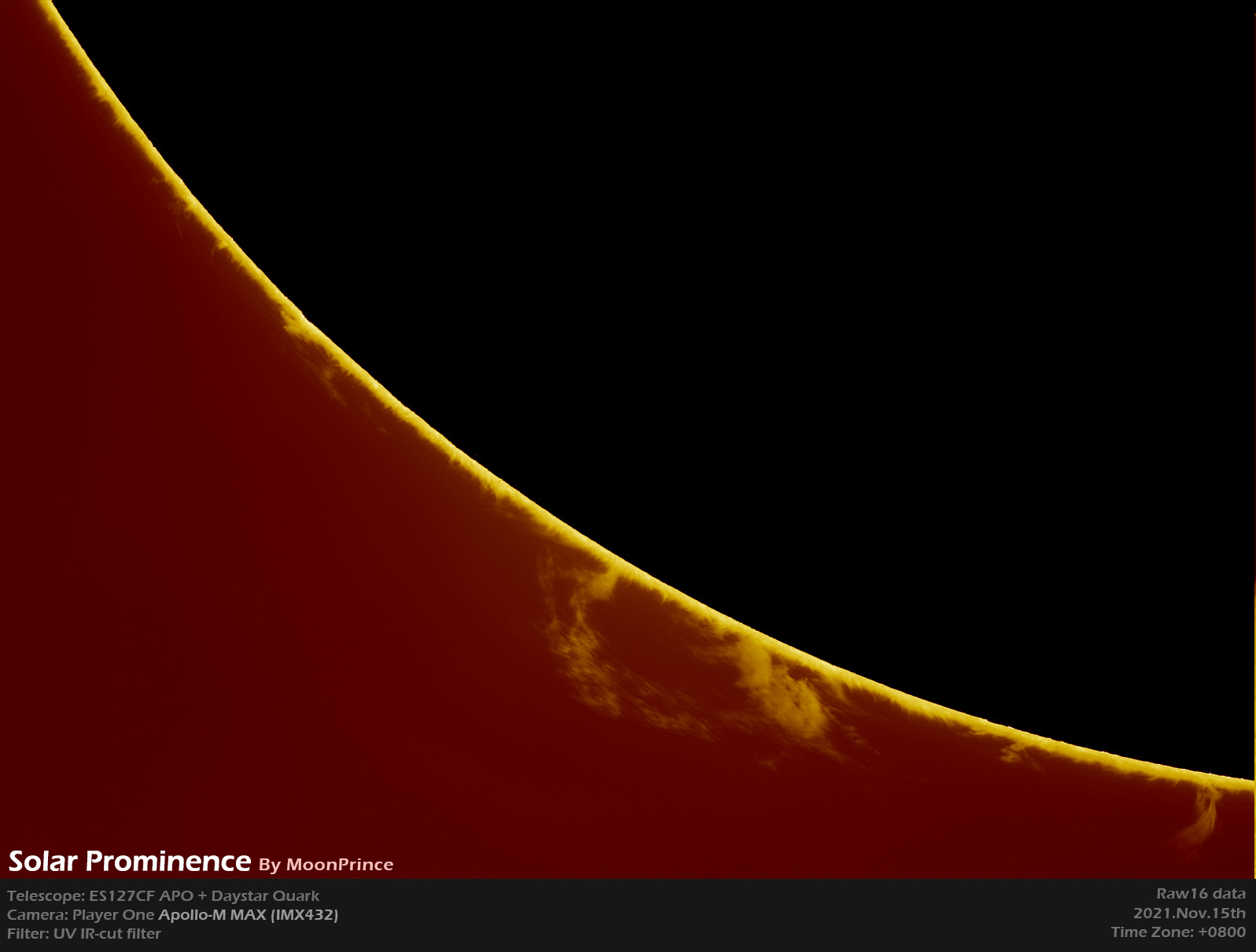
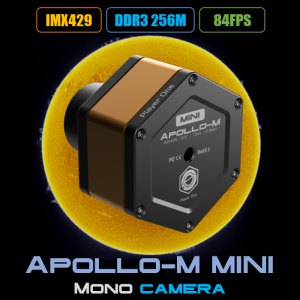
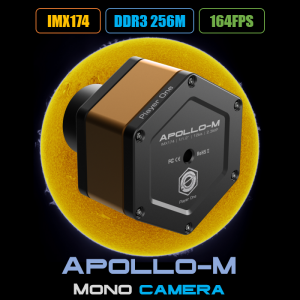
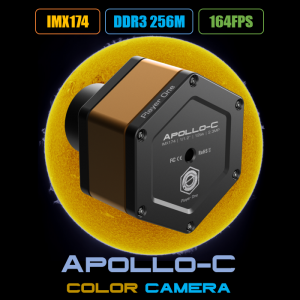
Adam Smith –
That’s the best solar camera after IMX174, I use it with my 102 refractor and quark, result is awesome!!
Player One Astronomy –
Thank you, this camera is very suitable for Quark users.
Mehmet Ergün –
For me the best h-alpha sun camera for long focal lengths. I am 110% satisfied.
Player One Astronomy –
Thank you!! Apollo-M MAX is widely used in the world this year, we are happy to see that solar imagers has options beyond IMX174 🙂
Dennis –
For lucky imagers the Apollo Max is a big upgrade from the IMX174, for high focal length / closeup work of sun, moon, planets etc.
It delivers a great value for the money in this sector.
EFRAIN PEREZ CERQUERA (verified owner) –
Después de meses de probarla con el filtro Daystar de la serie Quark, la considero actualmente la mejor camara solar y con el sistema de placa basculante del sensor la hace única en el mundo de la fotografía solar.